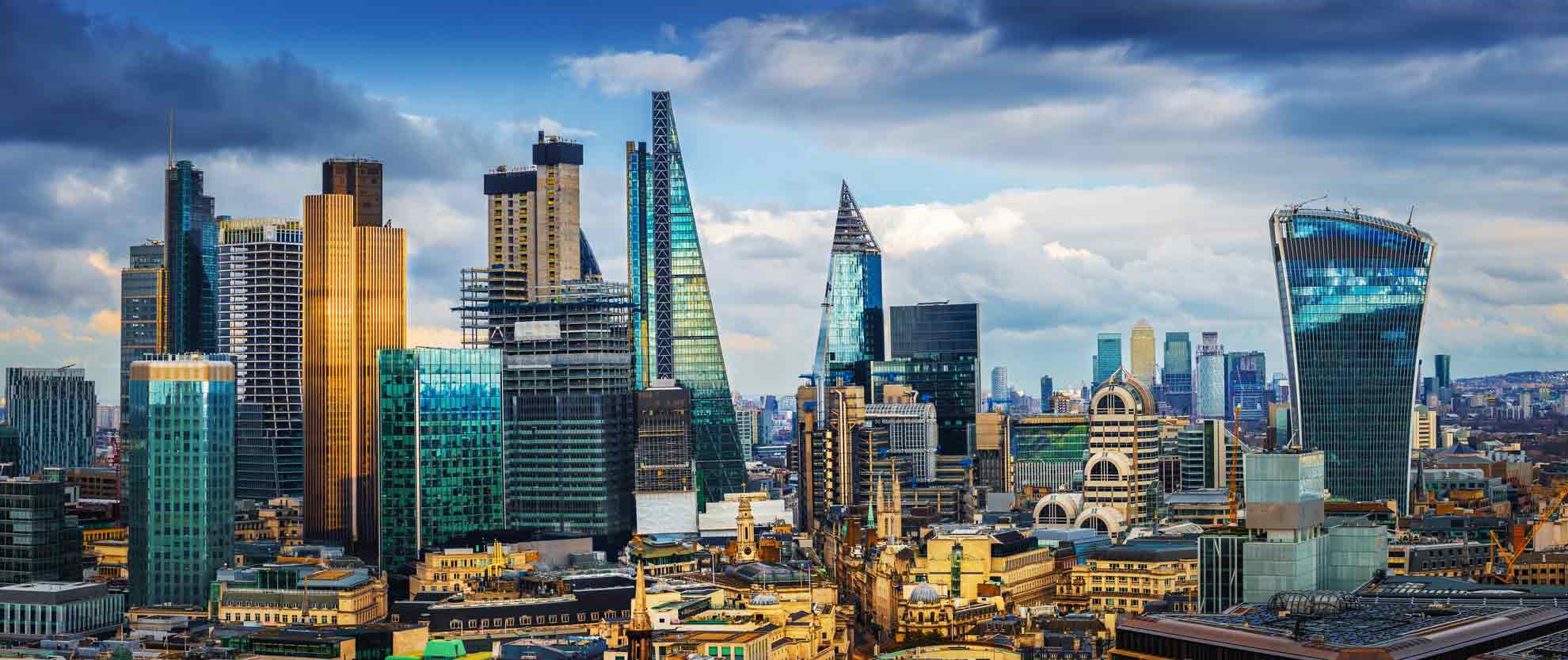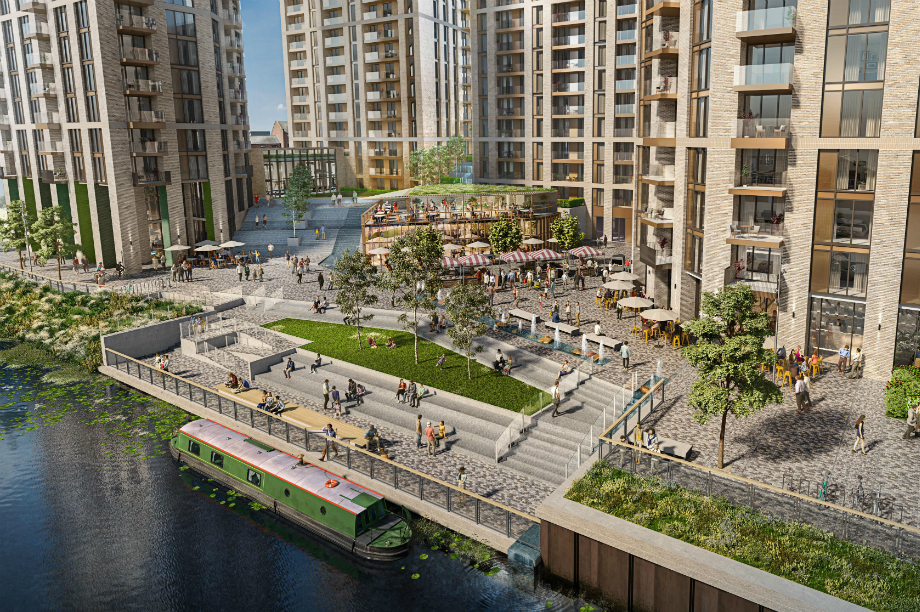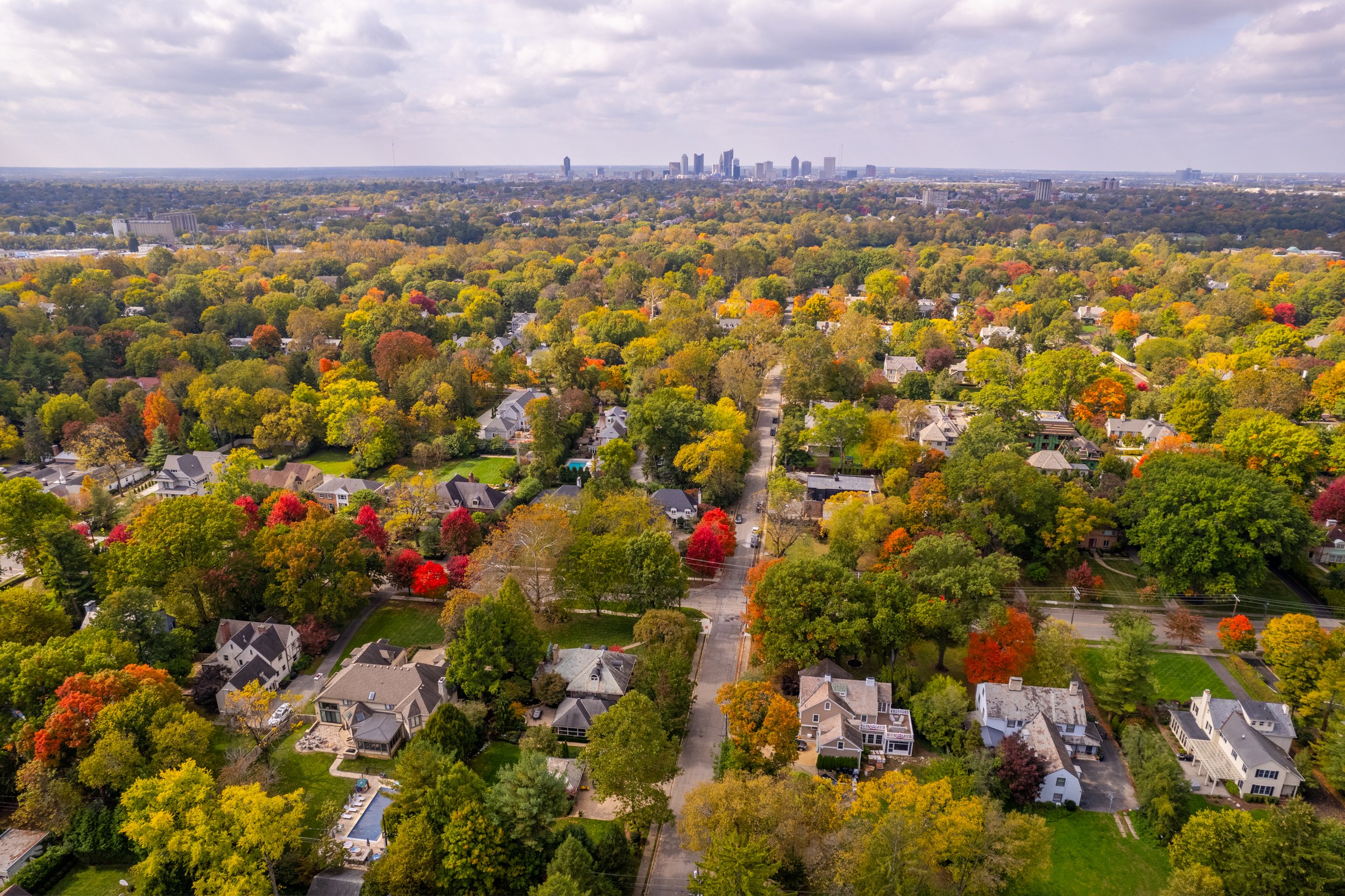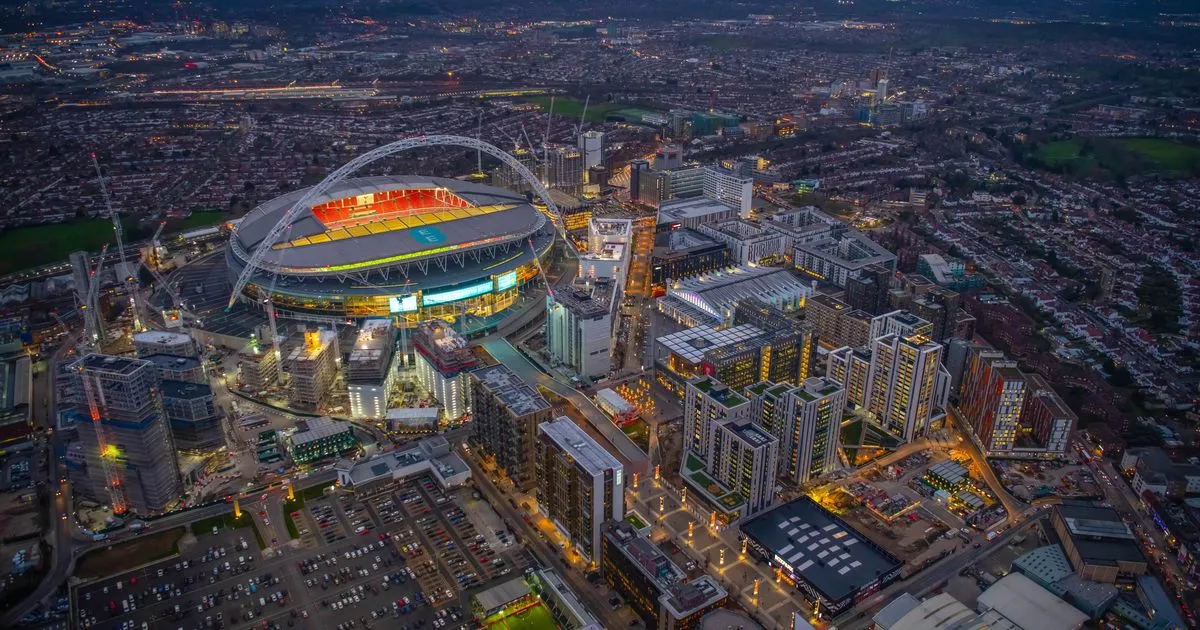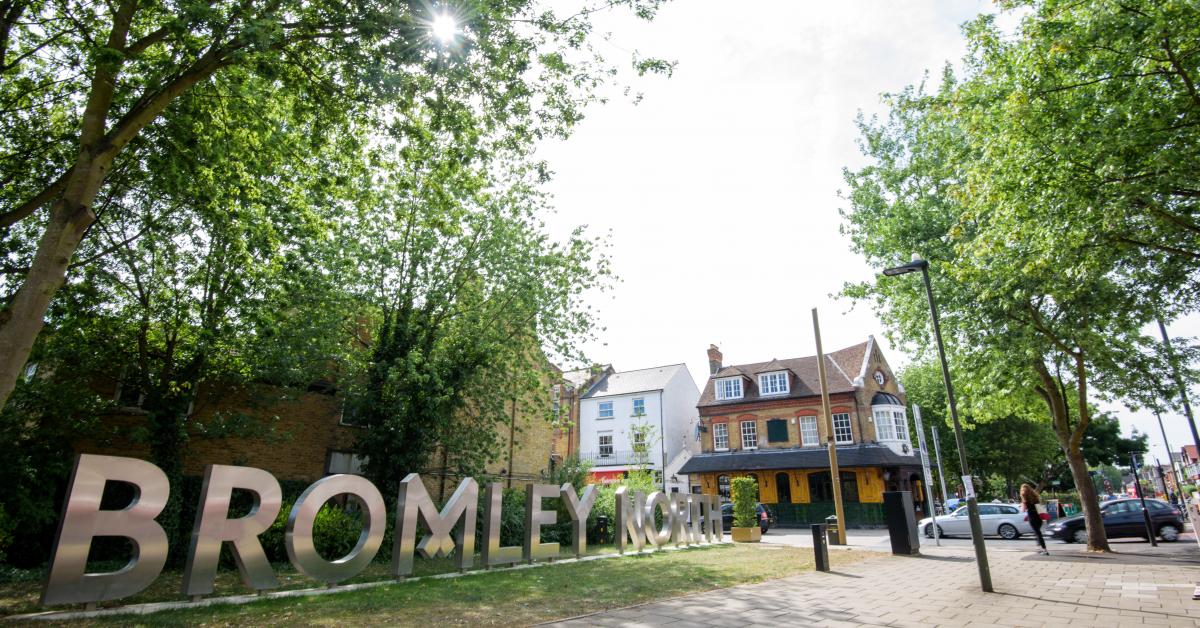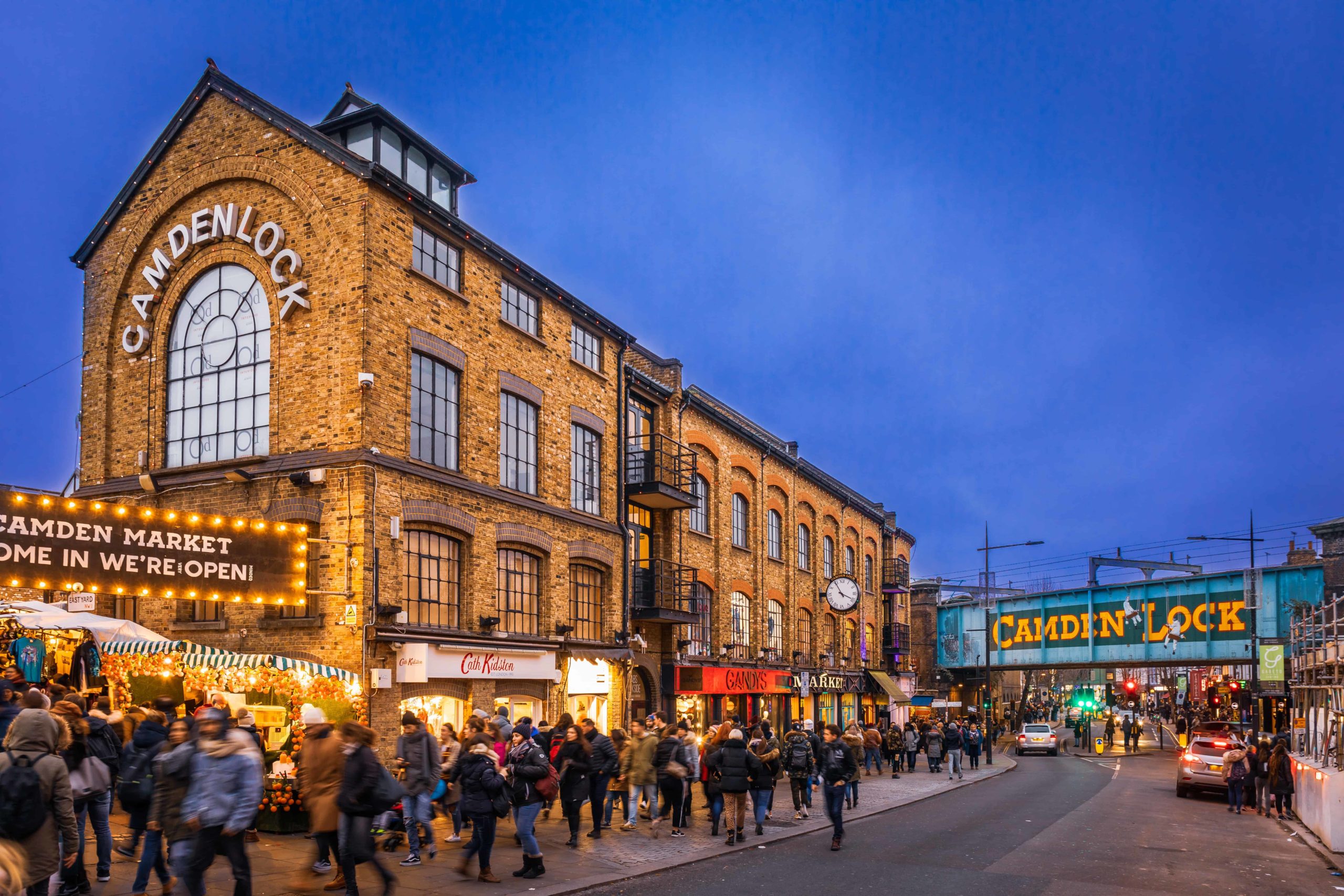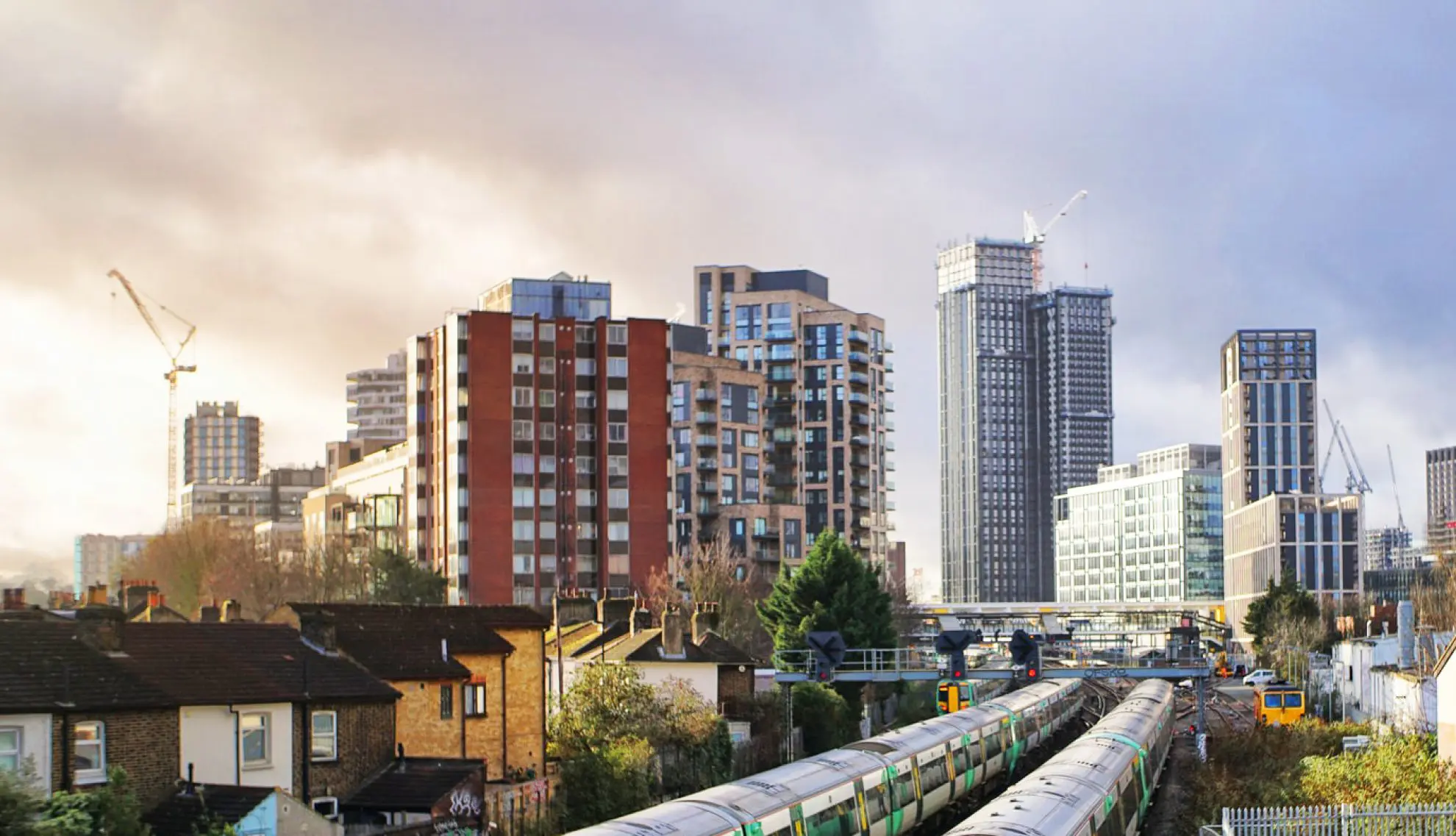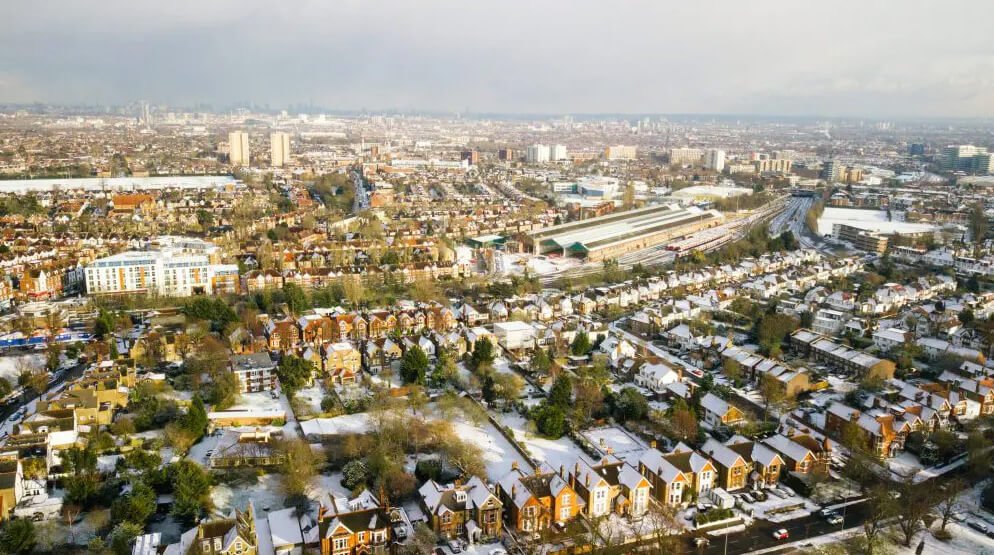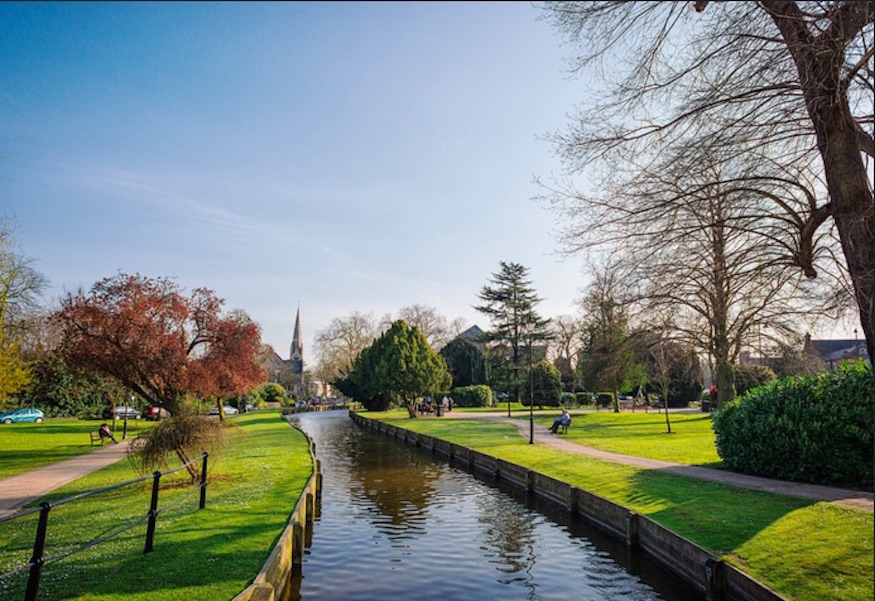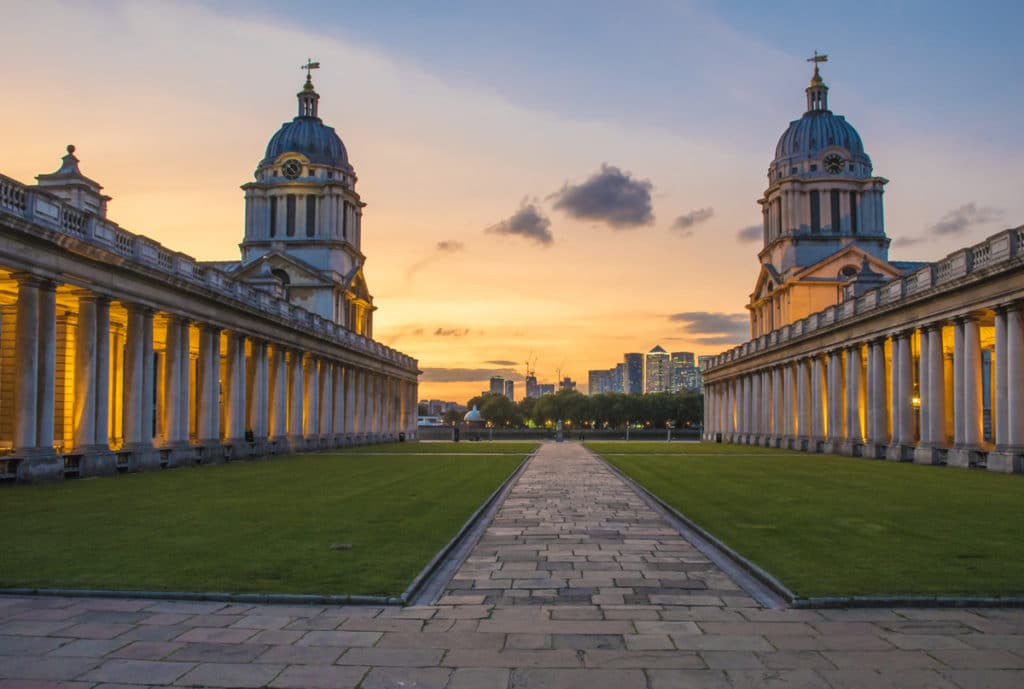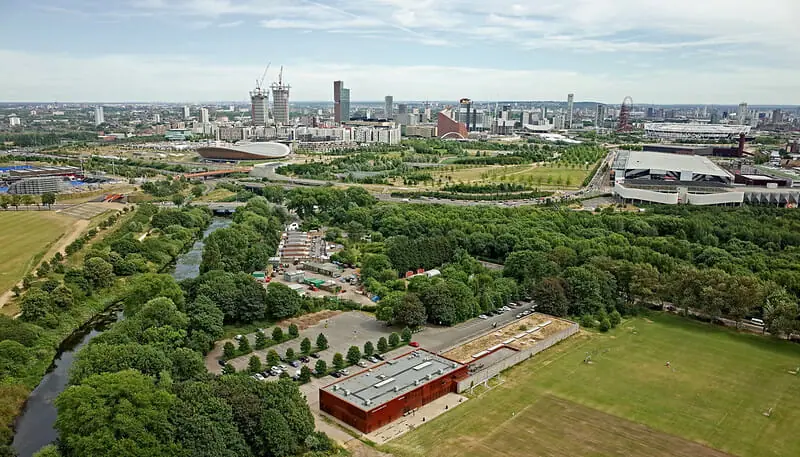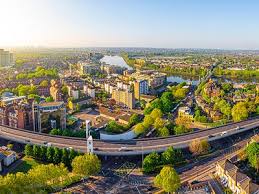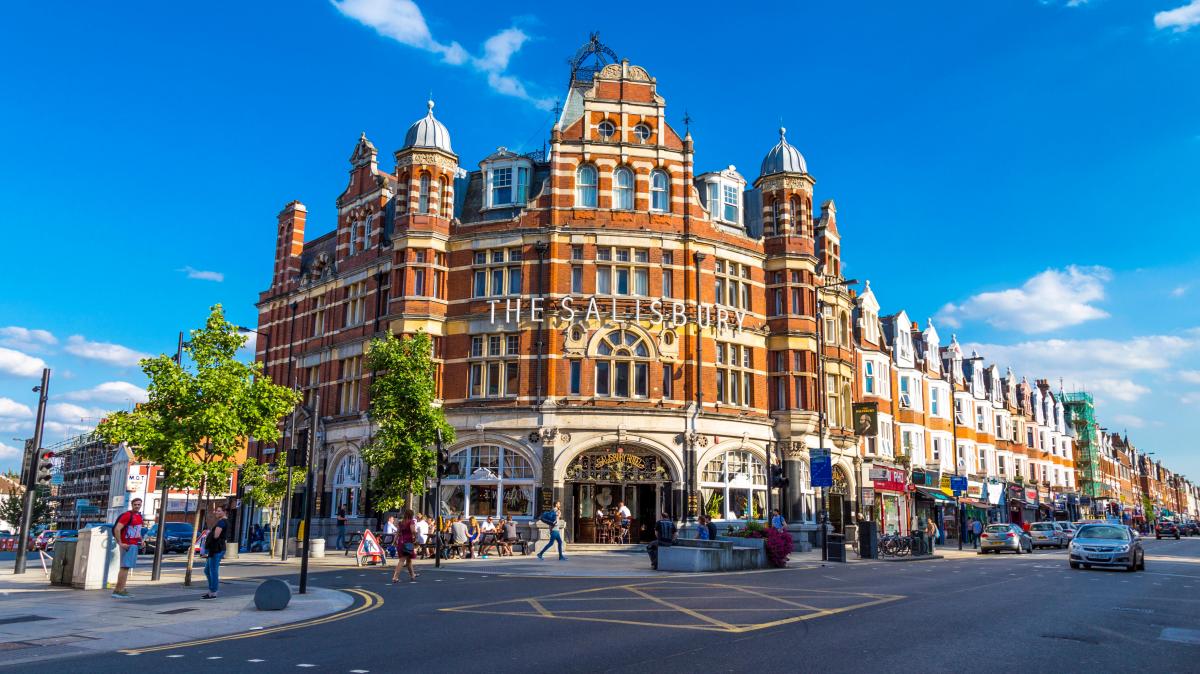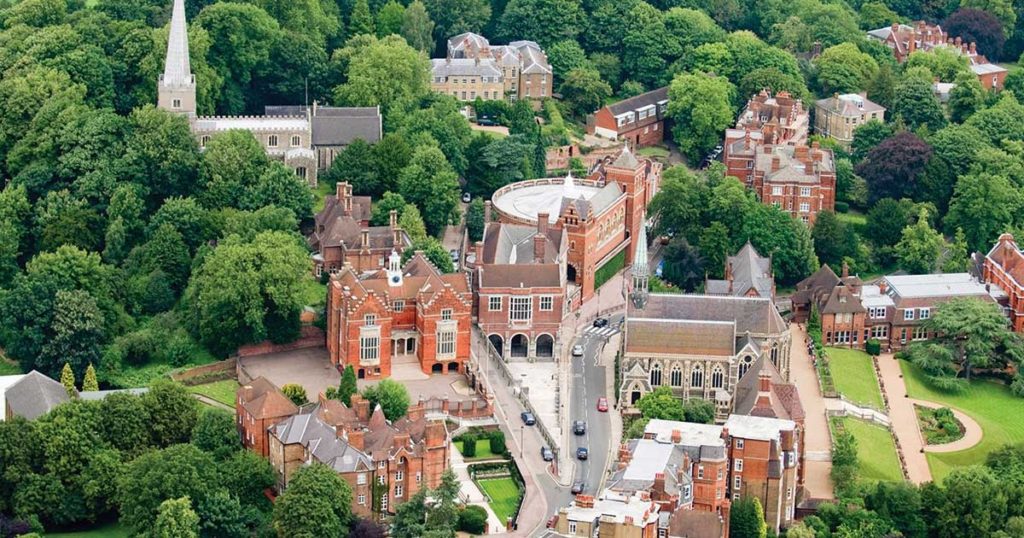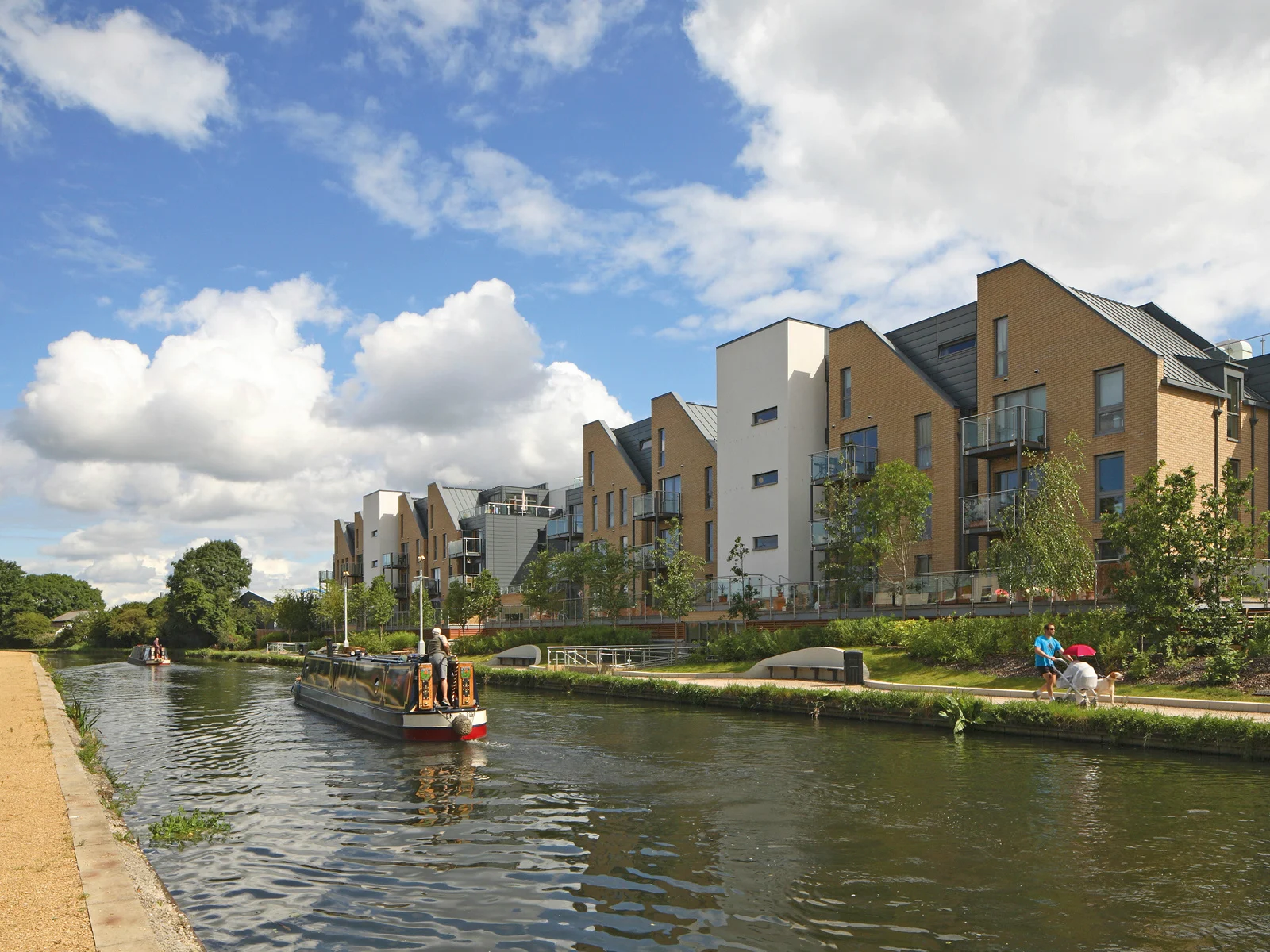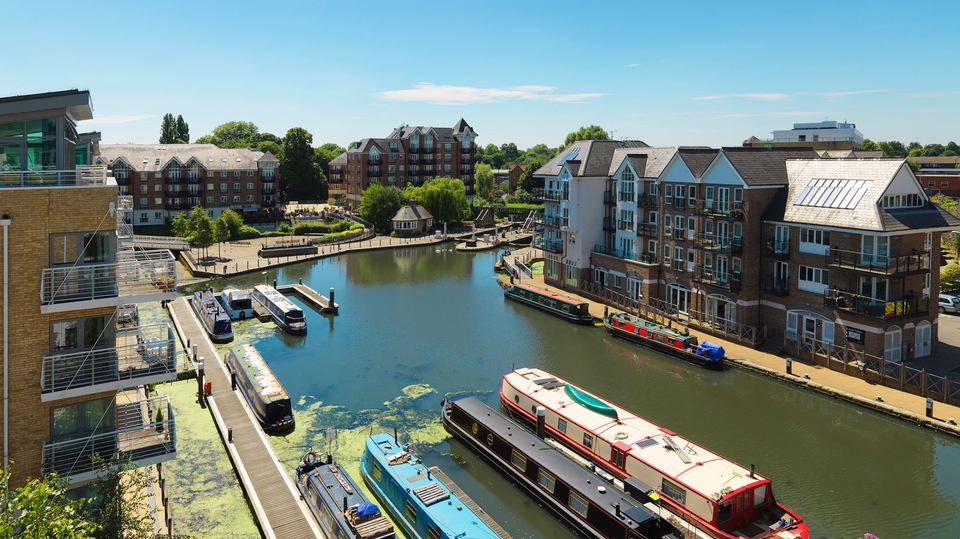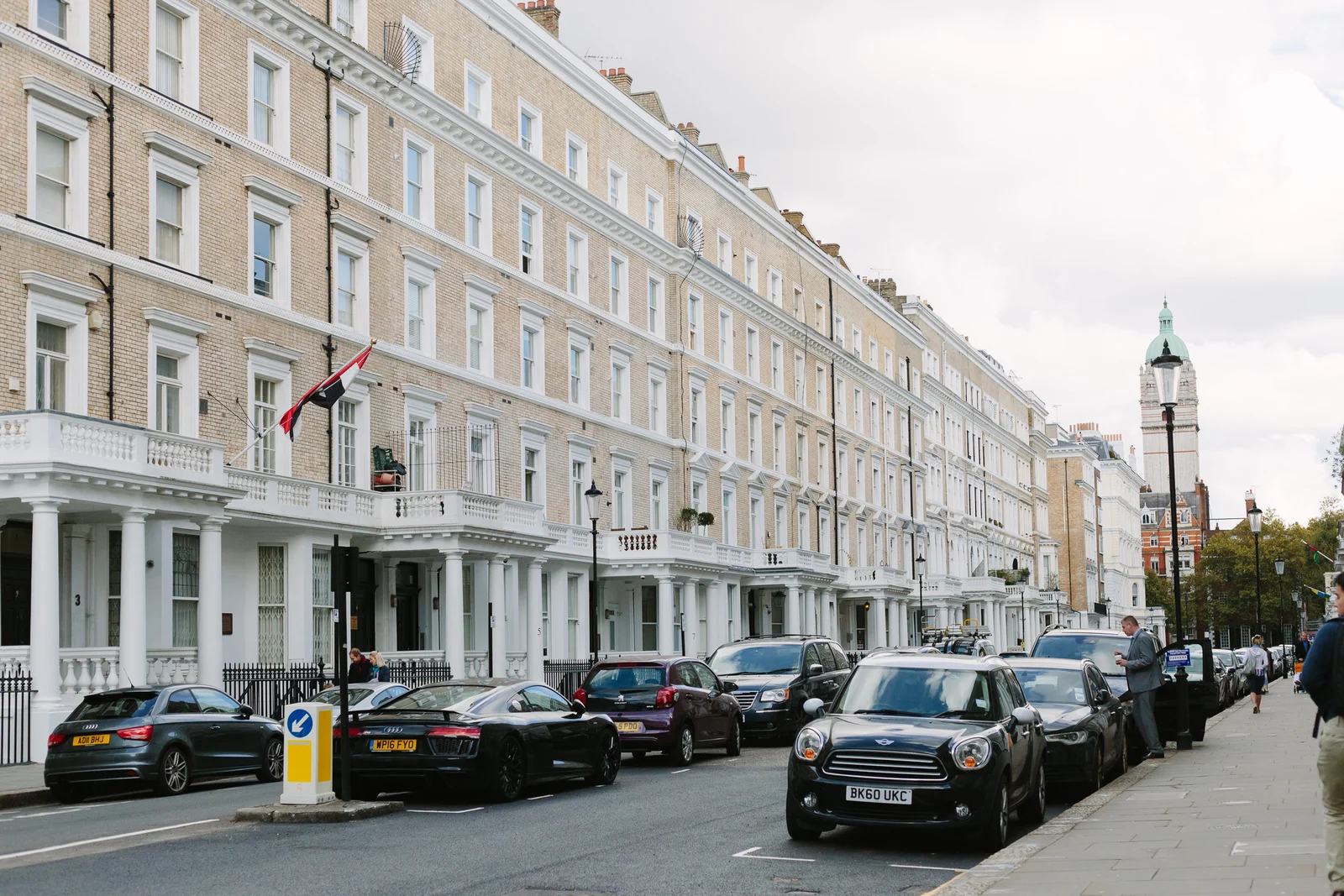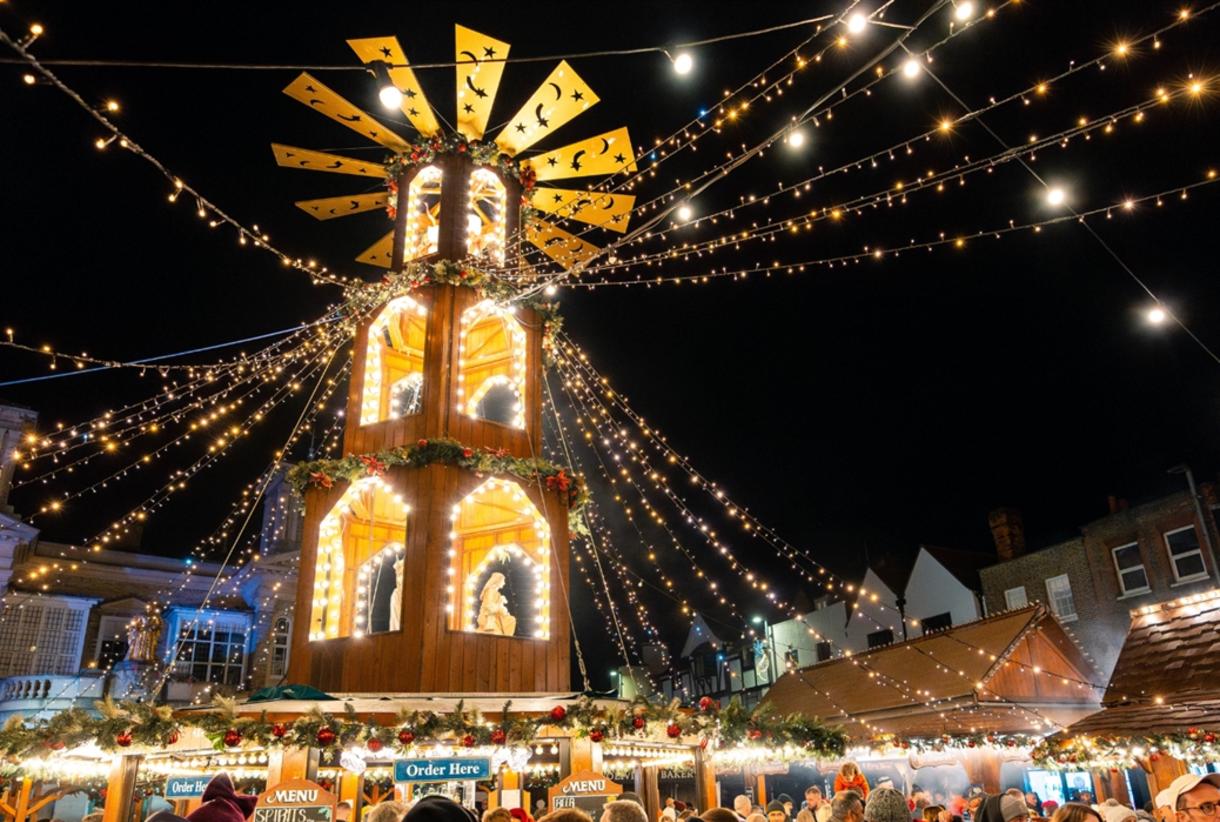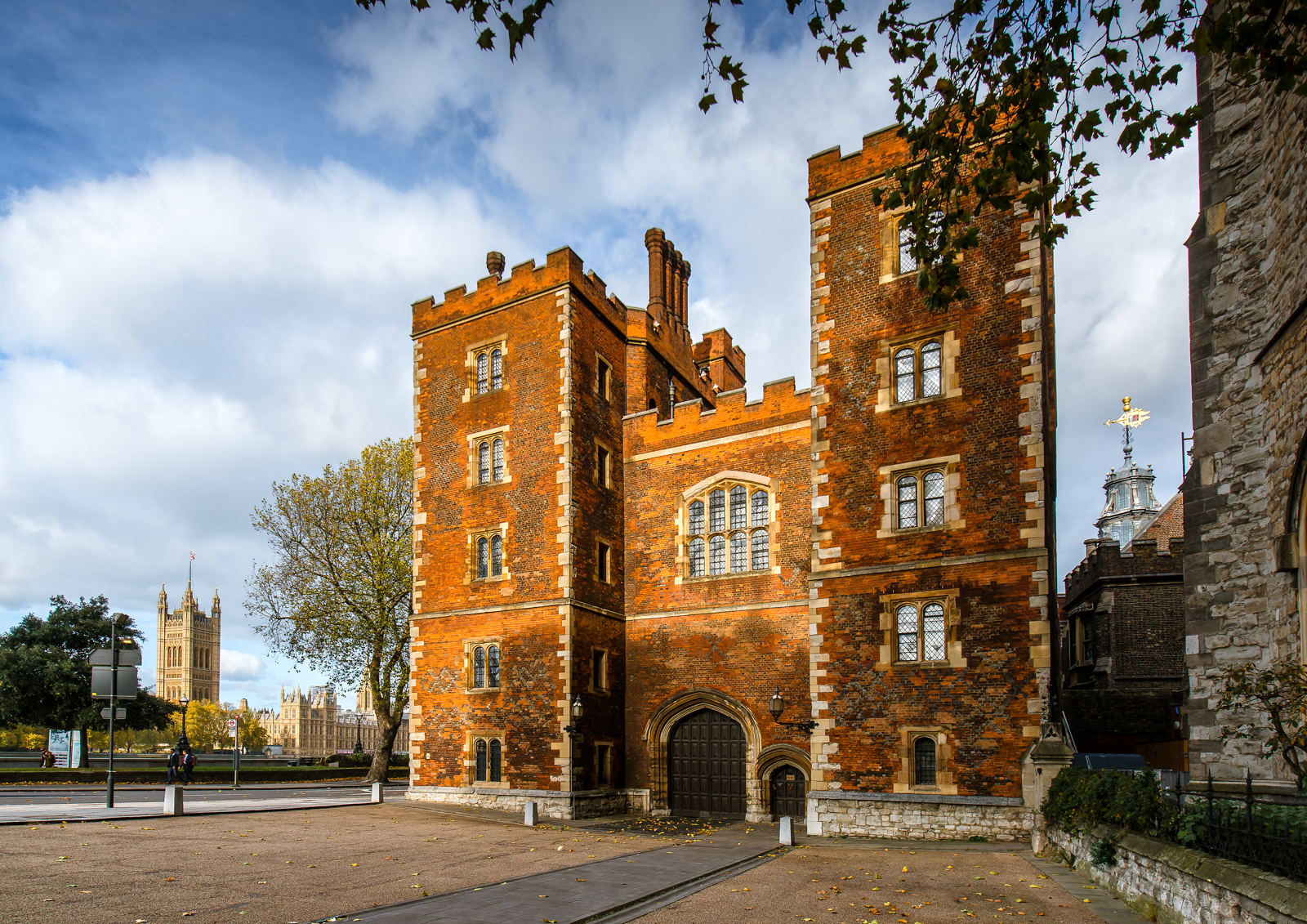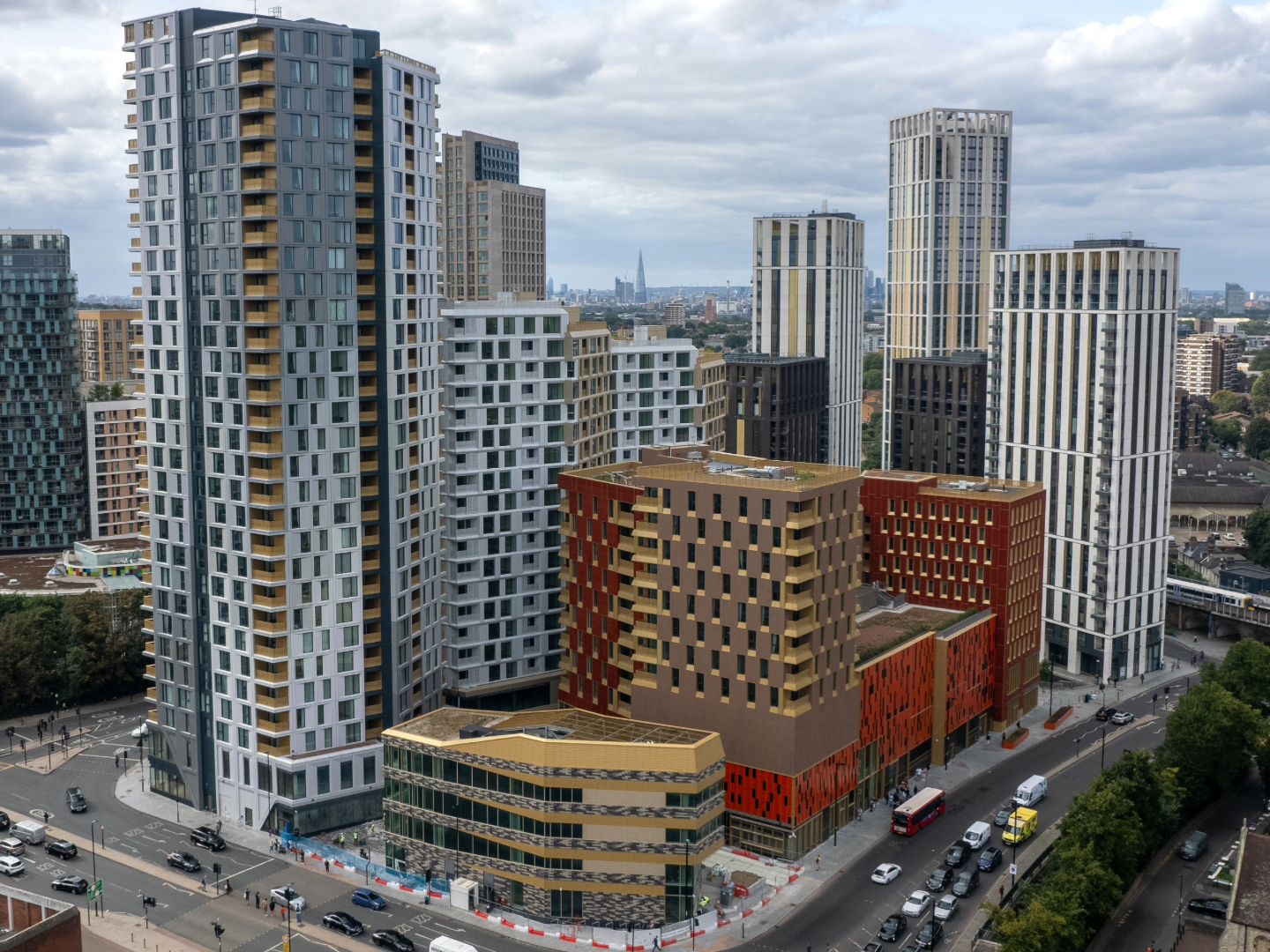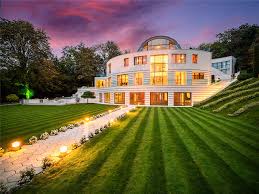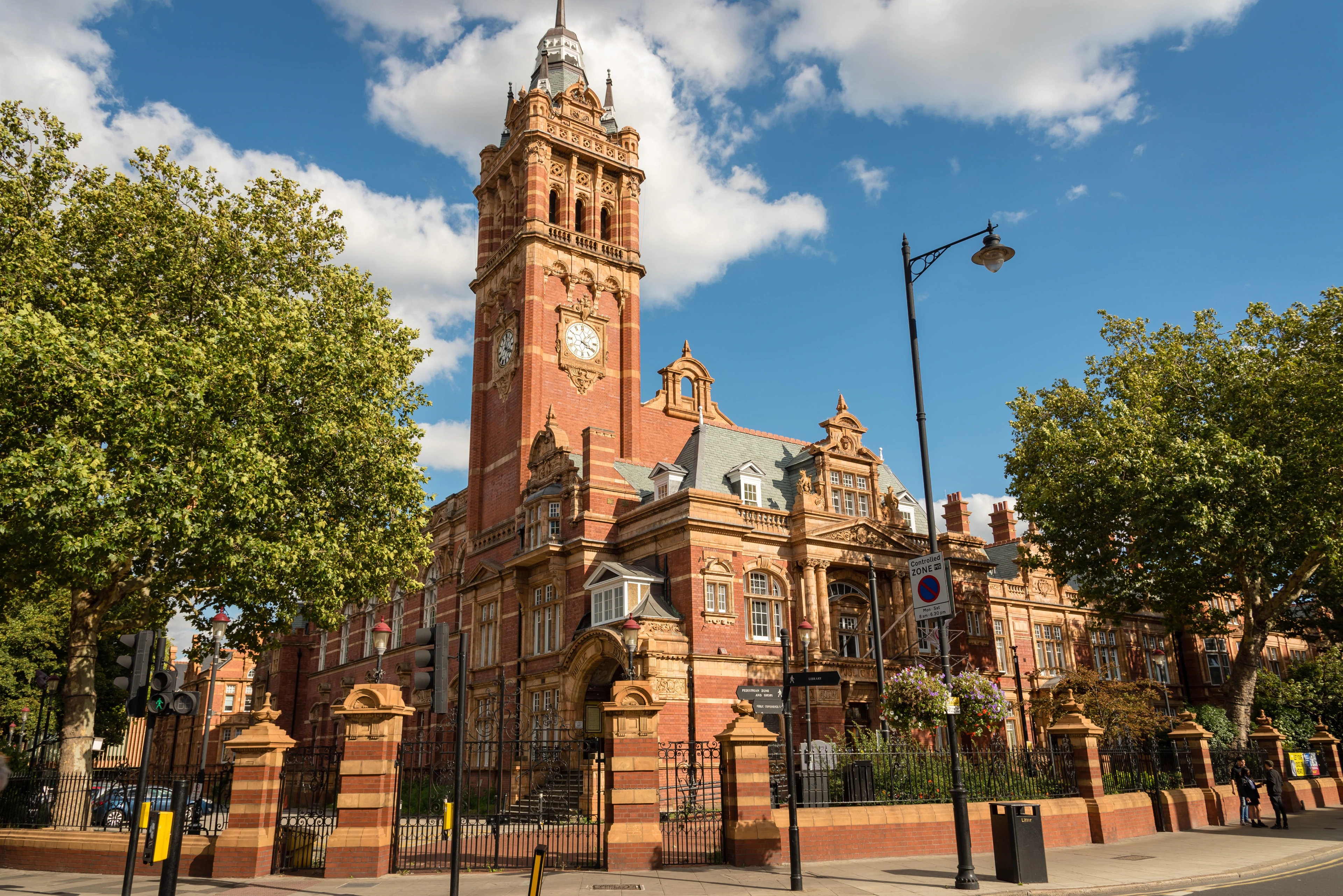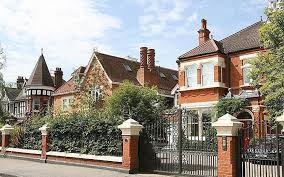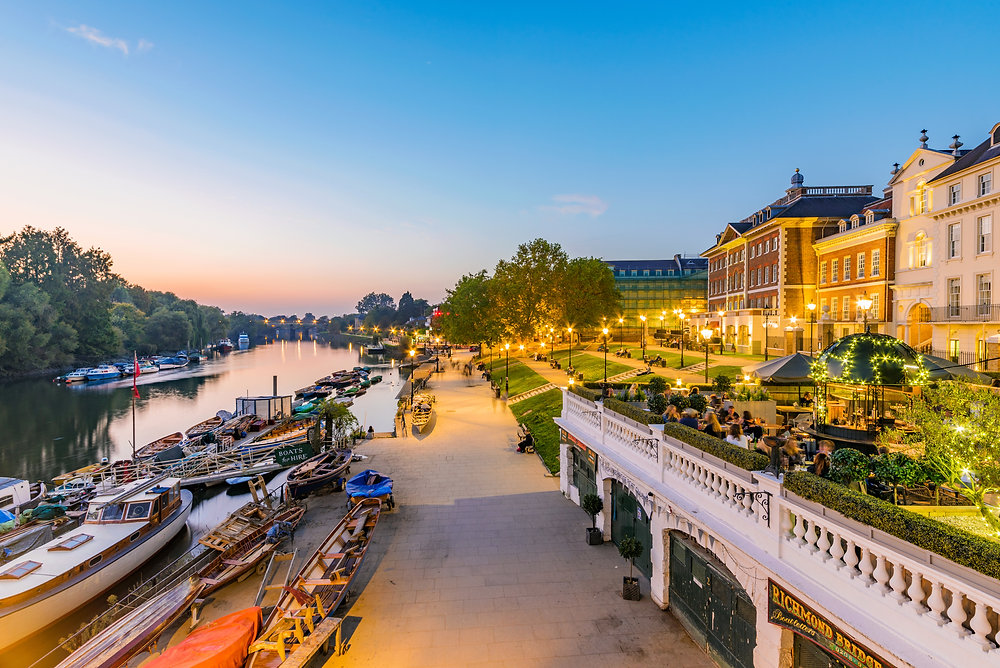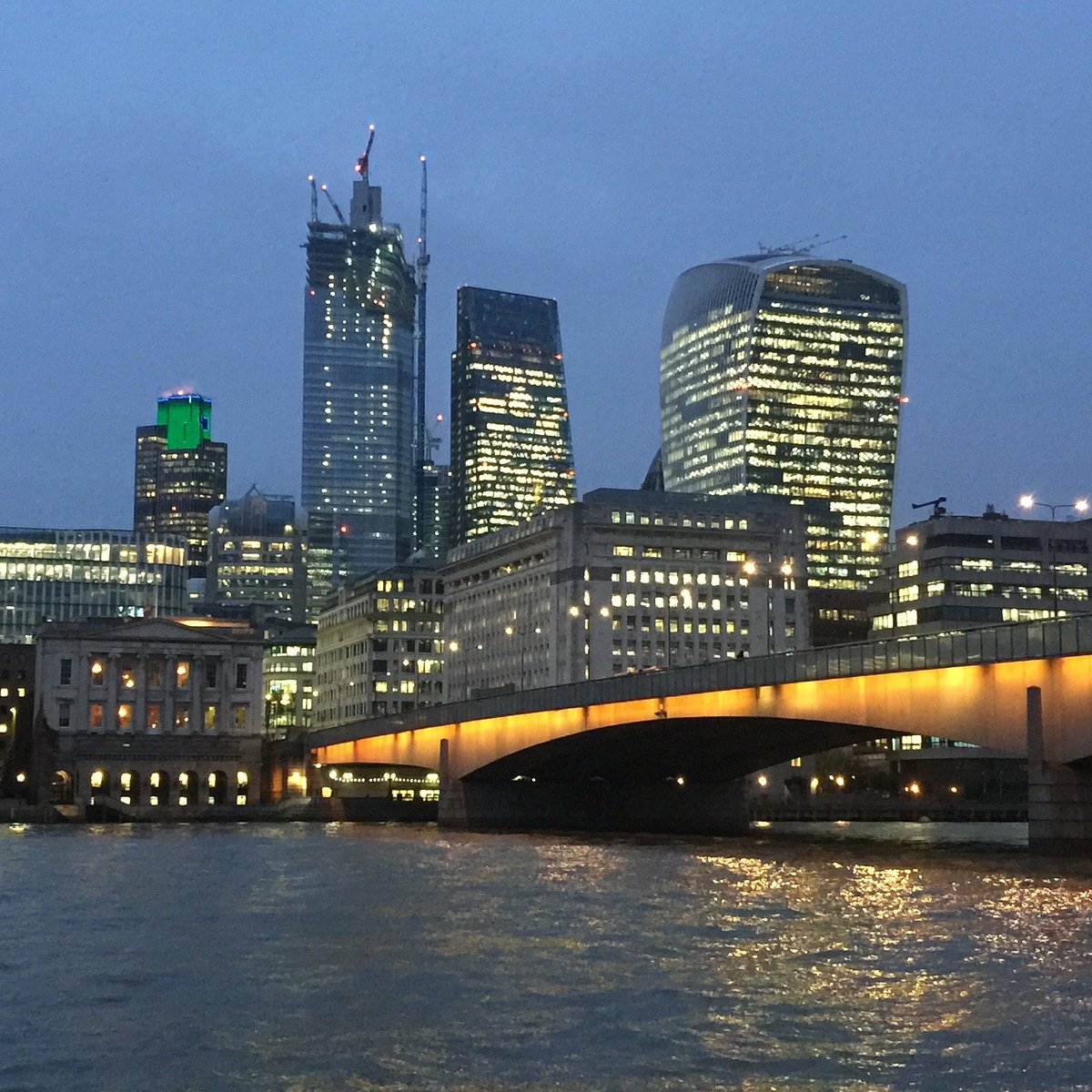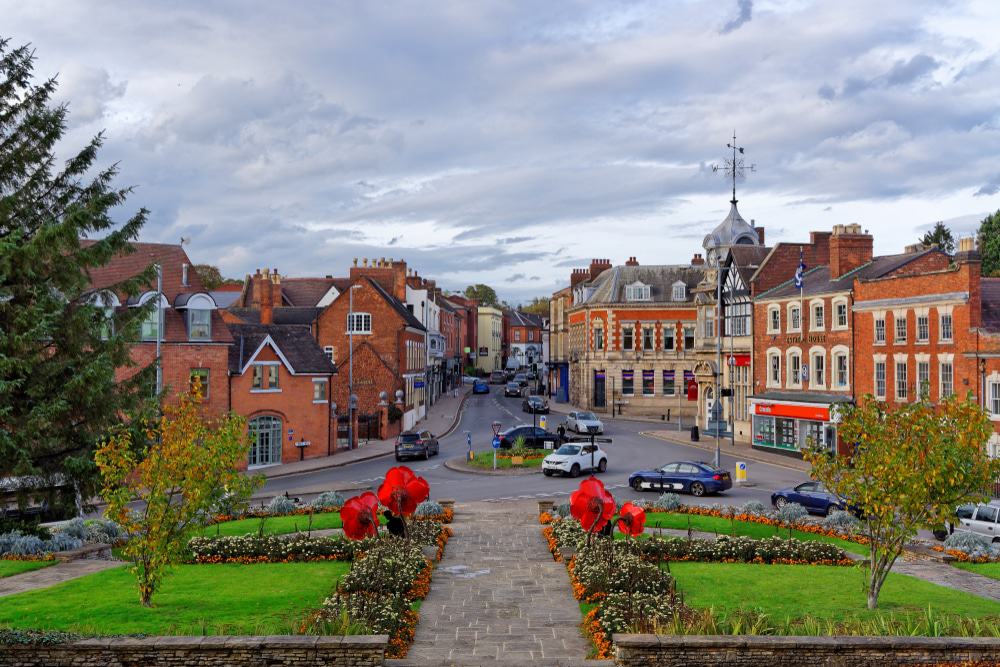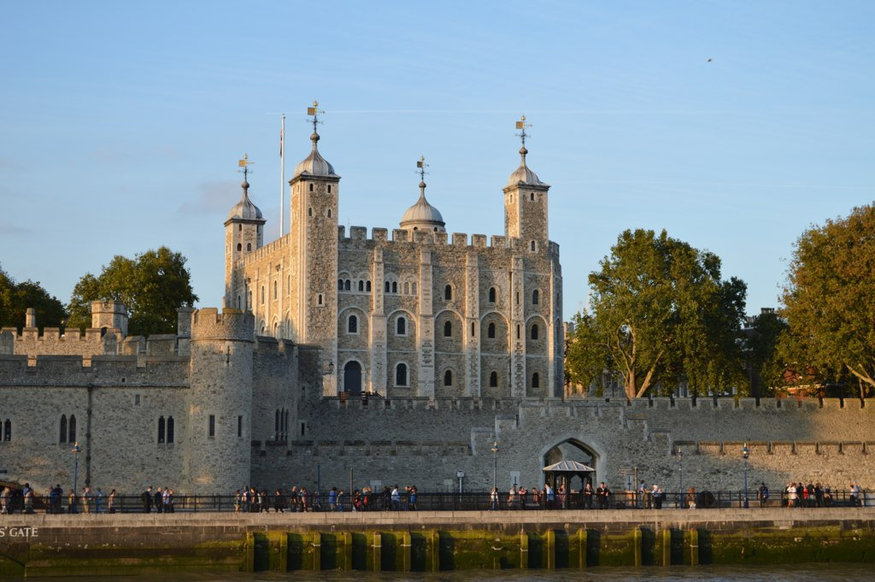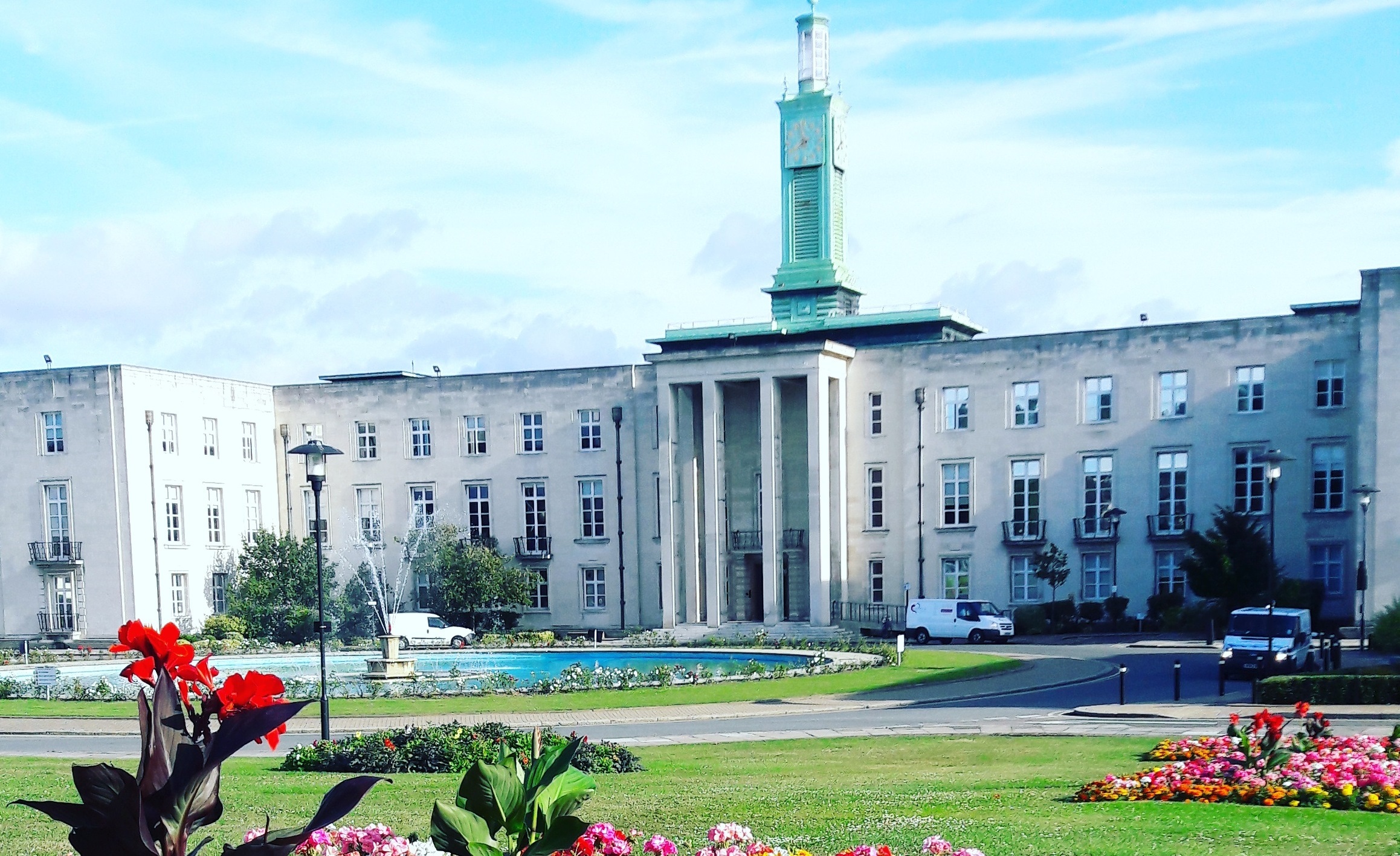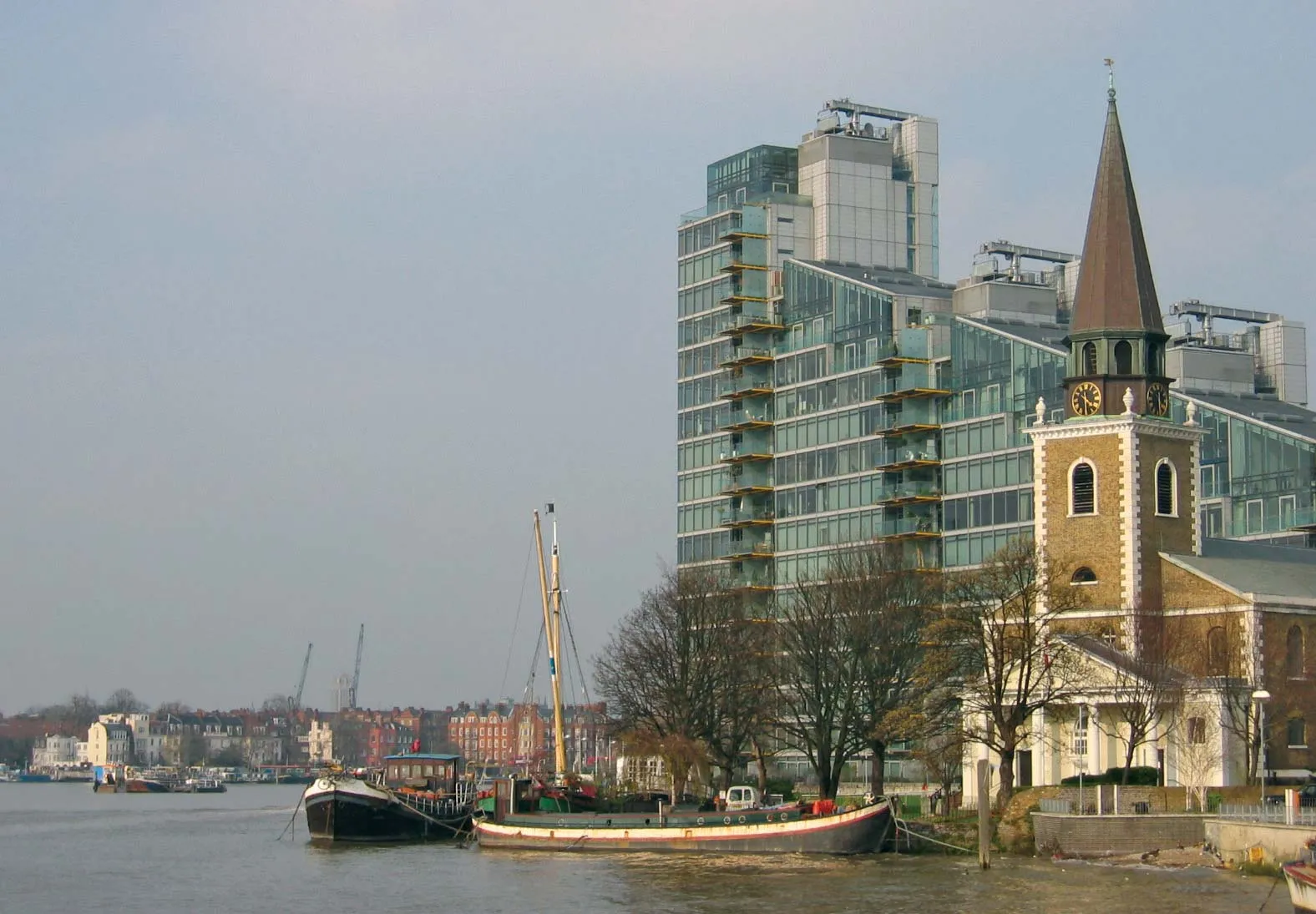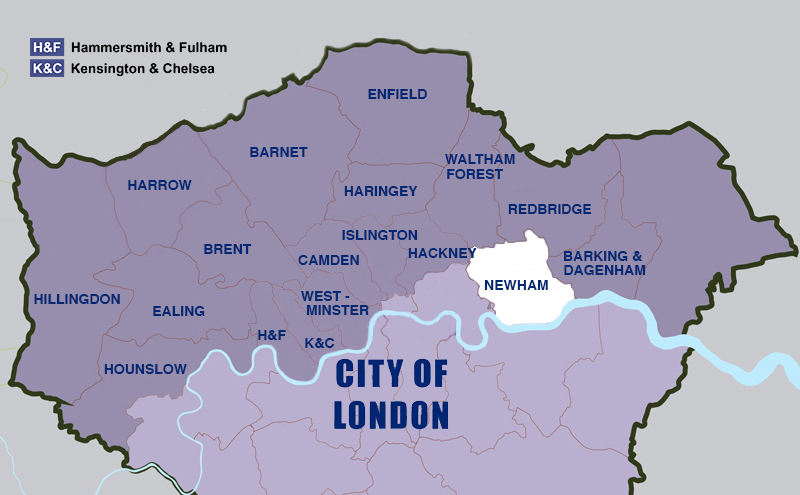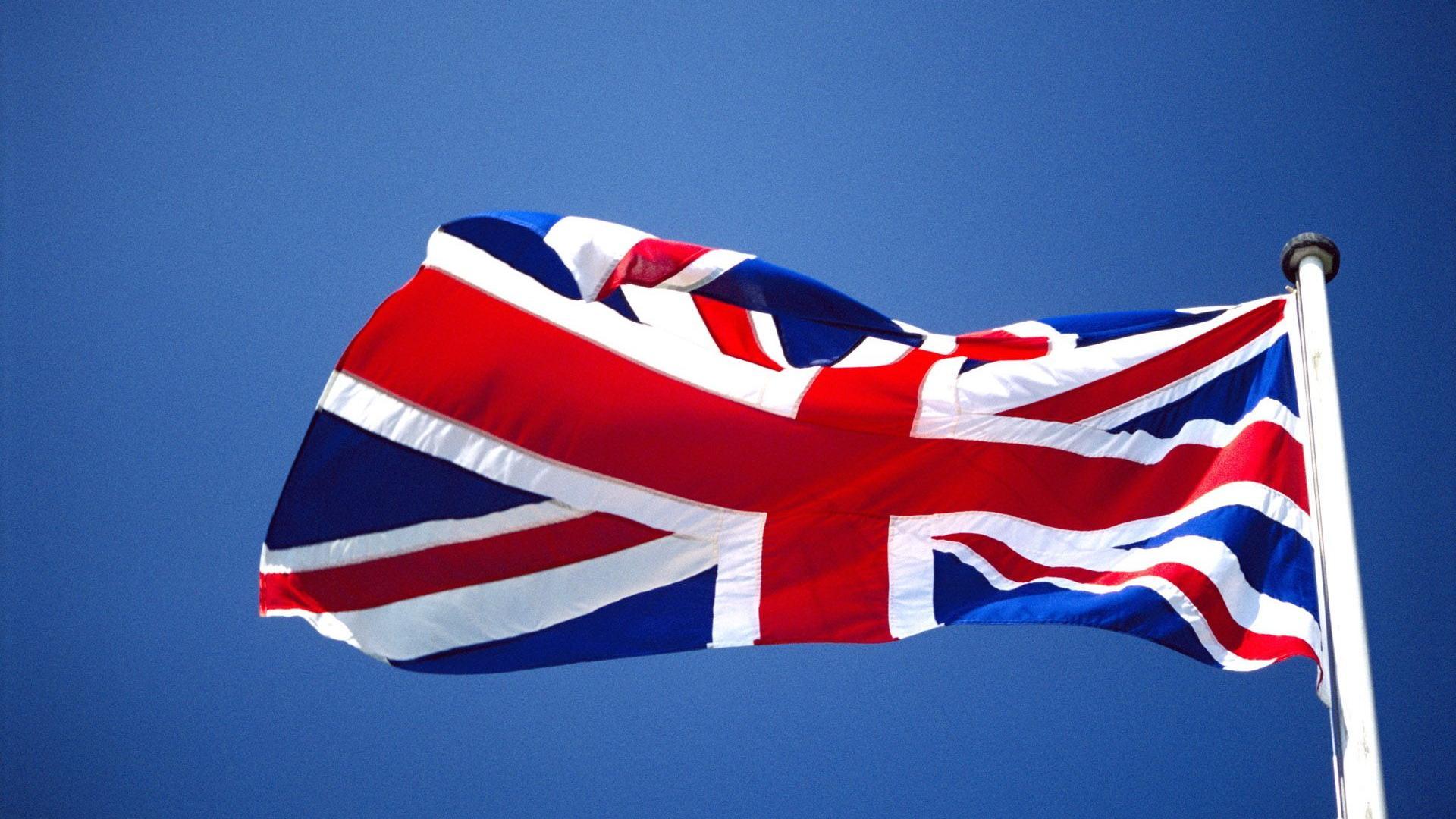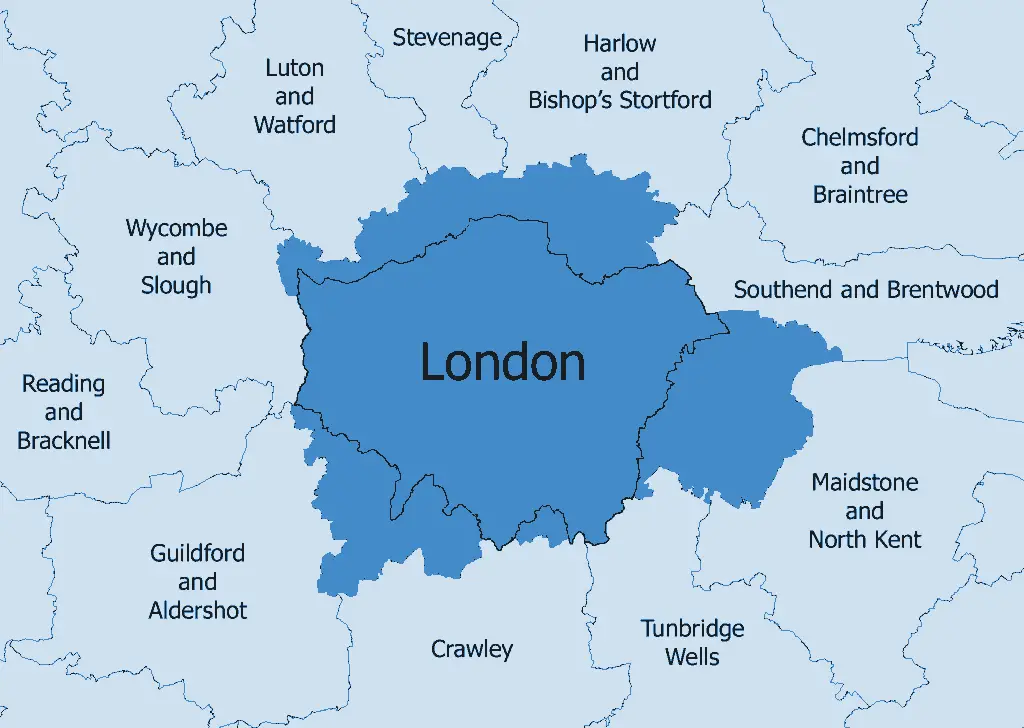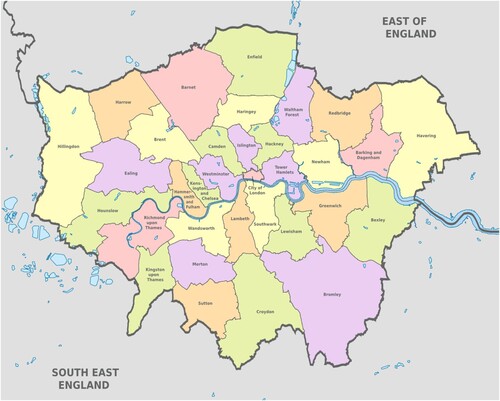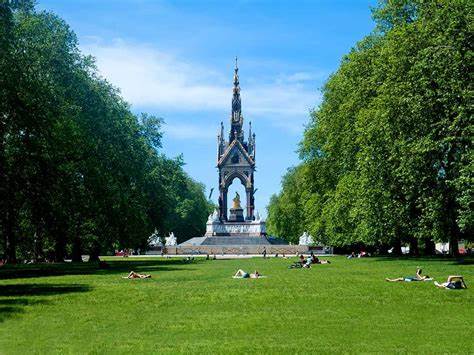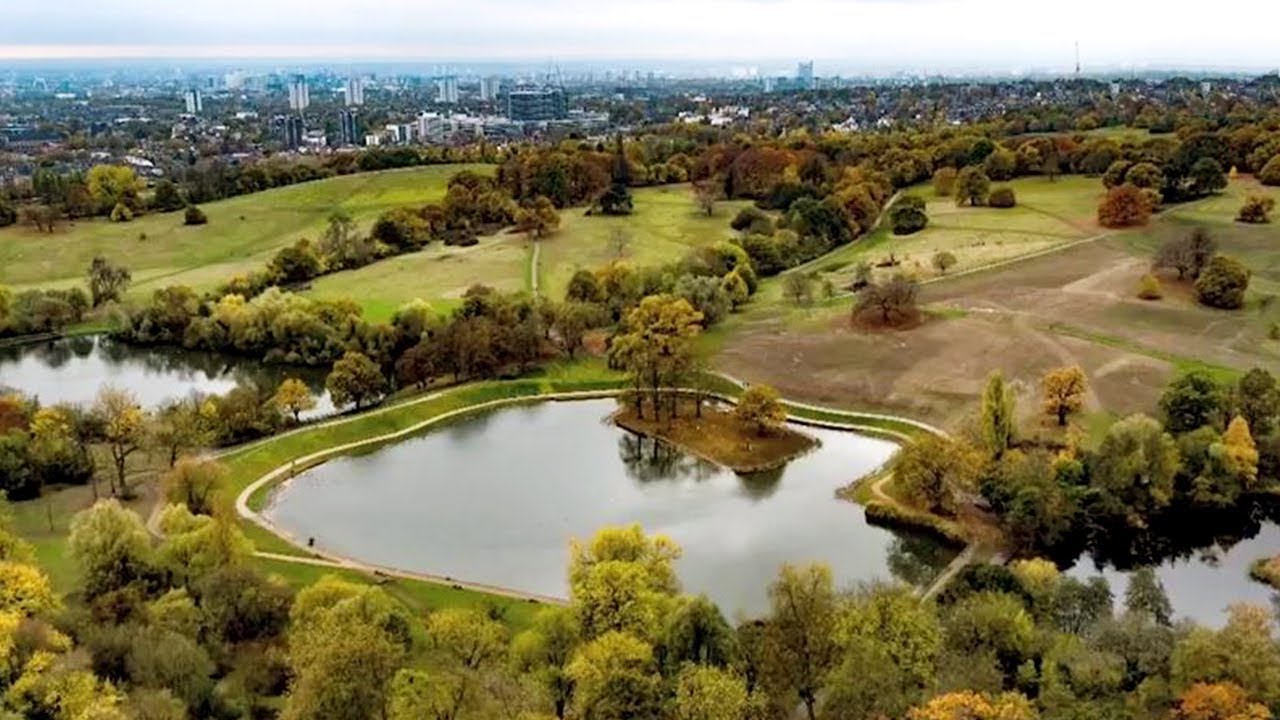London Sightseeing Made Easy With This Map
Make sightseeing in London a breeze. Our easy-to-use map covers all the top spots, helping you get around efficiently and enjoy every moment.
Apr 14, 202524 Shares24.3K Views
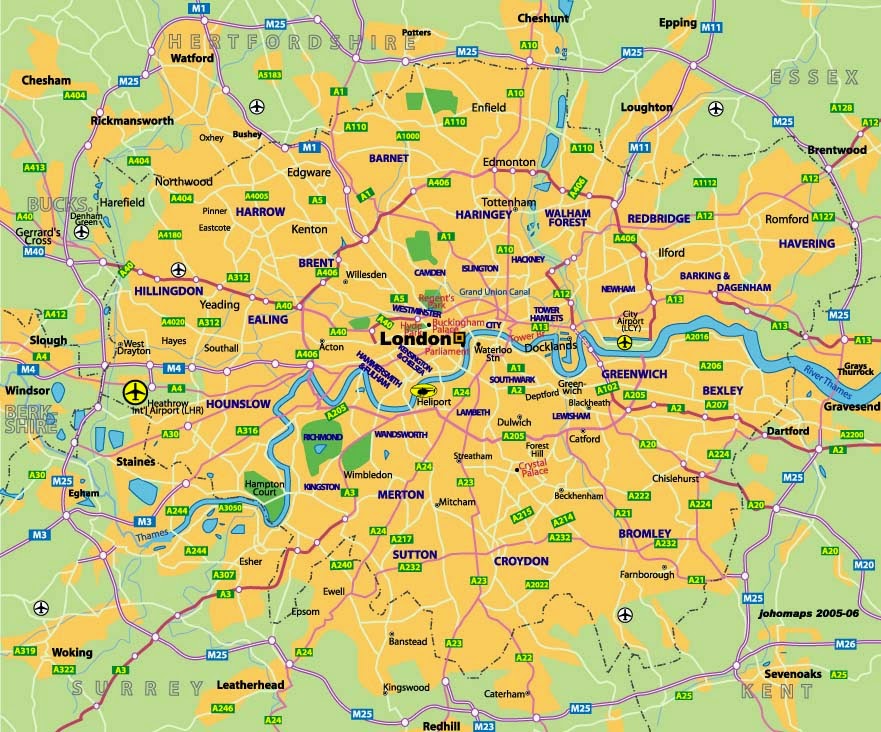
London's intricate network of streets, shaped by nearly two millennia of history, tells a story of urban evolution unlike any other global city. From its Roman foundations to its modern-day sprawl, understanding London through its maps opens up a fascinating world of navigation, history, and urban planning.
As millions of visitors and residents traverse its winding streets daily, mastering London's various mapping systems becomes an essential skill for anyone wanting to unlock the city's full potential. The relationship between London and its maps goes far beyond simple navigation.
These cartographic treasures reveal the city's transformation from a small Roman settlement to one of the world's most influential metropolises, while modern digital innovations continue to reshape how we experience this dynamic urban landscape.
Quick Facts About London
- Capital of the United Kingdom:London is the capital city of England and the United Kingdom, making it a political, economic, and cultural center.
- Population:London’s population is approximately 9.5 million people, making it one of the most populous cities in Europe.
- Currency:The currency used in London is the British Pound Sterling (£).
- Language:English is the official language of London, though the city is home to a diverse range of languages due to its multicultural population.
- Time Zone:London operates on Greenwich Mean Time (GMT) during winter and British Summer Time (BST) during daylight saving time.
- Area:The total area of London is about 1,572 square kilometers (607 square miles).
The Evolution Of London Maps Through History
The story of London's maps begins with the Romans, who created the first known plans of Londinium around 50 CE. These early representations focused primarily on defensive walls and major thoroughfares, many of which still influence London's street layout today. During medieval times, the creation of maps became more sophisticated, with monks and scholars producing detailed illustrations that combined geographical accuracy with artistic flourish.
The Great Fire of 1666 marked a turning point in London cartography. In its aftermath, surveyors like John Ogilby produced unprecedented detailed maps to aid in the city's reconstruction. These maps set new standards for accuracy and became the foundation for modern London cartography. The Georgian and Victorian eras brought further innovations, with detailed Ordnance Survey maps emerging in the 19th century, providing the first truly scientific approach to mapping the rapidly expanding metropolis.
Map Of London Cities
1. City Of London
The City of London, often referred to simply as "The Square Mile," is the oldest part of London and the site of the original Roman settlement. It’s the financial hub of the UK, hosting major institutions like the London Stock Exchange and the Bank of England. Despite its modern skyscrapers, such as The Gherkin and The Walkie Talkie, the area is steeped in history. Notable landmarks include St. Paul’s Cathedral, designed by Sir Christopher Wren, and the Tower of London, a UNESCO World Heritage Site. Visitors can also explore the Museum of London to trace the city’s evolution through the ages.
2. City Of Westminster
Westminster is synonymous with British politics, royalty, and some of the nation’s most iconic landmarks. The Houses of Parliament, with Big Ben standing tall, dominate the riverside. Buckingham Palace, the official residence of the monarch, attracts millions of visitors annually, especially during the Changing of the Guard. Westminster Abbey, a Gothic masterpiece, has hosted royal coronations and weddings for centuries. The borough is also home to Trafalgar Square, the National Gallery, and the bustling streets of Soho, making it a cultural and political centerpiece.
Boroughs Of London
1. Barking And Dagenham
Barking and Dagenham, located in East London, is historically rooted in industry and manufacturing. It played a pivotal role in London’s economic growth during the 20th century. Today, it is undergoing extensive regeneration, with new housing developments and cultural spaces being introduced. The borough is home to Barking Abbey, an ancient monastery, and nature reserves like Beam Valley Country Park. Affordable housing and accessibility make it a popular choice for young families.
The best views in Londoncan be enjoyed in the borough, especially around its nature reserves and green spaces. These areas provide a peaceful contrast to the fast-paced city life, allowing residents and visitors to unwind and take in stunning views of the surrounding landscapes.
2. Barnet
Barnet, one of London’s largest boroughs, is nestled in North London. It offers a suburban lifestyle with excellent schools, parks, and historic landmarks like the Church Farmhouse Museum. The borough is also home to the Royal Air Force Museum and boasts an array of dining and shopping options in areas like Finchley and High Barnet. Its blend of green spaces like Totteridge Fields and urban convenience attracts families and professionals alike.
3. Bexley
Situated in Southeast London, Bexley is a tranquil borough with a rich history. Hall Place and Gardens, a Tudor-era mansion, is a key attraction, along with Danson Park, which hosts an annual fireworks display. Bexleyheath is the commercial center, featuring shopping malls and dining spots. Its combination of affordable housing and scenic landscapes makes it a favorite for those seeking a quieter lifestyle near the city.
4. Brent
Brent is one of London’s most culturally diverse boroughs, located in the northwest. It is famously home to Wembley Stadium and the SSE Arena, making it a hub for sports and music events. The borough’s multiculturalism is reflected in areas like Harlesden and Kilburn, offering a variety of cuisines and cultural festivals. Landmarks such as the Shri Swaminarayan Mandir attract visitors from across the globe.
5. Bromley
Bromley, in South London, is a mix of suburban and rural charm. It boasts extensive green spaces like Crystal Palace Park, with its famous dinosaurs, and High Elms Country Park. Bromley town center offers shopping and entertainment options, while Chislehurst Caves and Down House, the former home of Charles Darwin, add a touch of history. The borough is known for its excellent schools and family-friendly neighborhoods.
6. Camden
A cultural icon in North London, Camden is synonymous with creativity and alternative lifestyles. Camden Market is one of the borough’s main attractions, offering unique fashion, art, and food. Regent’s Canal provides a scenic route for walks or boat rides. Camden’s music scene has nurtured many famous bands and artists, and its nightlife is among the liveliest in London. The British Library and London Zoo are also located here.
7. Croydon
Croydon is a bustling borough in South London, recognized as a major commercial hub. It features a dynamic arts scene, highlighted by Boxpark Croydon, and landmarks like Croydon Clocktower. The borough is undergoing rapid redevelopment, with new skyscrapers and business centers. For nature lovers, Lloyd Park and Shirley Windmill provide serene escapes. Croydon also has a rich transportation history, being the birthplace of the world’s first airport terminal.
8. Ealing
Ealing, often referred to as the "Queen of the Suburbs," is a vibrant borough in West London. It is known for its film history, with Ealing Studios being the oldest continuously operating film studio in the world. Annual events like the Ealing Jazz Festival bring the community together. The borough also boasts stunning parks like Walpole Park and Pitzhanger Manor, blending cultural heritage with natural beauty.
9. Enfield
Enfield, located in North London, has a unique mix of urban and rural areas. Highlights include the historic Forty Hall Estate and the tranquil Lea Valley Regional Park. Enfield Town offers a bustling shopping district, while areas like Southgate and Palmers Green provide a more relaxed suburban vibe. The borough is deeply connected to London’s industrial history, being the site of the world’s first ATM.
10. Greenwich
Greenwich is one of London’s most historic boroughs, recognized as a UNESCO World Heritage Site. Its maritime legacy is celebrated at the National Maritime Museum and Cutty Sark. Greenwich Park provides panoramic views of London, and the Royal Observatory marks the Prime Meridian. The O2 Arena and Greenwich Market are modern attractions that draw visitors year-round.
11. Hackney
Hackney, in East London, is known for its creative and youthful energy. It is home to vibrant neighborhoods like Shoreditch and Dalston, where street art and boutique shops thrive. Hackney Marshes, a vast open space, is a haven for sports enthusiasts. The borough’s multiculturalism is reflected in its food markets and festivals. Broadway Market and Victoria Park Village add a trendy yet community-focused atmosphere.
12. Hammersmith And Fulham
This West London borough is a blend of residential charm and urban convenience. It features iconic venues like the Hammersmith Apollo and Chelsea Football Club’s Stamford Bridge. Riverside walks along the Thames are a highlight, and the borough’s historic pubs add character. Areas like Fulham are known for their upscale dining and boutique shopping.
13. Haringey
Haringey is a diverse borough in North London with landmarks such as Alexandra Palace, a historic entertainment venue. The borough includes urban centers like Wood Green and leafy neighborhoods like Crouch End. It also offers a vibrant arts scene and green spaces such as Finsbury Park and Highgate Wood, making it a popular choice for families and young professionals.
14. Harrow
Harrow, located in Northwest London, is a largely residential borough known for its leafy streets and green spaces. The area is home to the prestigious Harrow School, which has educated several notable figures, including Winston Churchill. Harrow-on-the-Hill offers stunning views of London and has preserved its historic charm with cobblestone streets and old buildings. With excellent schools, parks like Harrow Recreation Ground, and easy access to the city, Harrow is a desirable place for families seeking a suburban lifestyle with good transport links.
15. Havering
Havering, located in East London, offers a blend of urban and rural living. Known for its vast green spaces, it is home to the Hornchurch Country Park and Rainham Marshes, which provide tranquil natural retreats. Romford, the largest town, is a major shopping hub and boasts a large market. Havering also celebrates its history, with landmarks such as the St. Edward’s Church and the Queen’s Theatre in Hornchurch. The borough has grown in popularity due to its relatively affordable housing and suburban feel, making it appealing to young families.
16. Hillingdon
Hillingdon is a large and diverse borough in West London, known for both urban and rural landscapes. It is home to Heathrow Airport, one of the busiest airports in the world, and the surrounding areas benefit from excellent transport links. Hillingdon has numerous parks and green spaces, including the Colne Valley Regional Park and Ruislip Woods. The borough also offers a variety of cultural attractions, including the Battle of Britain Bunker, commemorating the WWII air battle, and Hillingdon Court Park, known for its history and open grounds.
17. Hounslow
Hounslow, in West London, is another borough that benefits from its proximity to Heathrow Airport. The borough offers a dynamic mix of residential areas, parks, and commercial centers. The picturesque Osterley Park, with its neoclassical mansion and gardens, is a key highlight. Hounslow High Street is a bustling area with shopping and dining options, and the borough is also known for its diverse communities, reflected in the many international cuisines and cultural events held throughout the year.
18. Islington
Islington is a vibrant and trendy borough in North London. Known for its vibrant arts and culture scene, it is home to the Almeida Theatre and the Islington Assembly Hall, both of which host popular performances. The borough also features charming neighborhoods such as Angel and Highbury, known for their independent shops, cafes, and restaurants. The Highbury Fields and Regent’s Canal offer green spaces for relaxation, while the borough is also renowned for its lively nightlife and diverse culinary offerings.
19. Kensington And Chelsea
Kensington and Chelsea, located in West London, is one of the wealthiest and most iconic boroughs. It is home to cultural landmarks like the Victoria and Albert Museum, the Natural History Museum, and the Science Museum. Kensington Gardens, with its beautiful Kensington Palace, is a central attraction, along with the Royal Albert Hall. The borough is also home to the world-famous shopping district of King's Road and designer stores in Sloane Square. With its luxurious properties and central location, it attracts affluent residents and tourists alike.
20. Kingston Upon Thames
Kingston upon Thames is a historic and picturesque borough in Southwest London, known for its riverside charm and vibrant town center. The Royal Borough is home to Kingston University and the beautiful Bushy Park, one of London’s largest Royal Parks. Kingston High Street offers an array of shops, restaurants, and bars, while the area’s proximity to the Thames provides opportunities for outdoor activities like rowing and walking along the river. Kingston is also known for its thriving cultural scene, with theaters and galleries showcasing local and international talent.
21. Lambeth
Lambeth, in Central London, is known for its vibrant cultural scene and beautiful riverside views. The borough is home to iconic landmarks such as the London Eye and the Southbank Centre, one of the largest arts venues in the city. Lambeth's neighborhoods like Brixton are famous for their multicultural communities, music, and food scenes. The borough also boasts expansive green spaces like Brockwell Park, which hosts festivals, sports, and outdoor events. Its central location makes Lambeth a desirable place to live, offering easy access to London's heart.
22. Lewisham
Lewisham, in Southeast London, offers a diverse mix of urban life and green spaces. Areas like Deptford are undergoing significant redevelopment, bringing new life to the borough. Lewisham is home to parks such as Hilly Fields and the scenic Blackheath Common, where locals enjoy outdoor activities. The borough's cultural offerings include the Lewisham Art House, which supports local artists, and the lively markets in areas like Brockley and Catford. Lewisham’s excellent transport links and vibrant communities have made it increasingly popular with young professionals.
23. Merton
Merton, in Southwest London, is a borough with a combination of suburban charm and urban convenience. It is home to Wimbledon, the world-famous tennis tournament held annually at the All England Club. The borough also boasts lush green spaces like Morden Hall Park, with its beautiful gardens and wildlife. The thriving town centers of Wimbledon and Mitcham offer shopping, dining, and cultural experiences. Merton has a strong community focus, with excellent schools and leisure facilities, making it an attractive area for families.
24. Newham
Newham, in East London, is a dynamic and rapidly developing borough. The iconic Olympic Park and Queen Elizabeth Olympic Park, built for the 2012 London Olympics, are central to the area’s regeneration. The borough is culturally rich, with a variety of markets, festivals, and restaurants representing diverse international cuisines. Stratford is the hub of commerce and entertainment, featuring the Westfield Stratford City shopping center and the Theatre Royal. The borough’s excellent transport links and new housing developments make it a growing area for professionals and families.
25. Redbridge
Redbridge, located in Northeast London, is known for its abundance of parks and green spaces, such as Valentines Park and Epping Forest. It is a borough of contrasts, offering both suburban calm and easy access to the hustle and bustle of central London. Redbridge is a family-friendly area with excellent schools and a strong sense of community. Its commercial centers, such as Ilford, are undergoing regeneration and attracting new businesses, while the diverse culture of the borough is reflected in its array of shops, restaurants, and cultural events.
26. Richmond Upon Thames
Richmond upon Thames, located in Southwest London, is one of the most affluent and picturesque boroughs. It boasts the beautiful Richmond Park, which is the largest of London's Royal Parks and a UNESCO World Heritage Site. The borough’s riverside setting along the Thames offers scenic views and outdoor activities. Richmond town center is renowned for its boutique shopping, cafes, and restaurants. The area is also home to the iconic Kew Gardens, attracting visitors from around the world to explore its vast plant collections and greenhouses.
27. Southwark
Southwark, located in Central London, is known for its rich history and cultural landmarks. The borough is home to Shakespeare’s Globe Theatre, Tate Modern, and the Borough Market, one of London’s oldest food markets. The iconic Tower Bridge spans the River Thames, and the area offers a vibrant arts and food scene, with an ever-growing number of bars, restaurants, and theaters. Southwark's central location and diverse offerings make it a lively and sought-after borough for both tourists and residents.
28. Sutton
Sutton, in South London, is a largely residential borough known for its green spaces and suburban charm. With parks like Nonsuch Park and Carshalton’s tranquil ponds, Sutton offers plenty of outdoor space for residents to enjoy. The borough is renowned for its high-quality schools and family-friendly atmosphere. The town center provides a range of shopping and dining options, while its strong transport connections to central London make it convenient for commuters. Sutton is a peaceful area that attracts families and professionals looking for a suburban lifestyle with easy access to the city.
29. Tower Hamlets
Tower Hamlets, located in East London, is one of the most diverse and vibrant boroughs in the city. It is home to the financial district of Canary Wharf, a hub for global business. The borough also boasts the historic Tower of London, a UNESCO World Heritage Site, and the iconic Docklands area. The neighborhood of Whitechapel is famous for its history, including its association with the infamous Jack the Ripper. Tower Hamlets has a strong sense of community, with a variety of markets, restaurants, and cultural celebrations that reflect the area’s multicultural population.
30. Waltham Forest
Waltham Forest, in Northeast London, is known for its strong local community and emerging arts scene. The borough features large open spaces such as Epping Forest and Walthamstow Marshes, providing plenty of room for outdoor activities. Walthamstow, a key area in the borough, offers a blend of traditional markets and modern developments. The Waltham Forest Council has invested in cultural initiatives, leading to the rise of creative spaces and art exhibitions across the borough. With a variety of residential options and good transport links, Waltham Forest is becoming increasingly popular with young professionals and families.
31. Wandsworth
Wandsworth, located in Southwest London, is known for its riverside setting and excellent transport connections. The borough offers a combination of urban living and access to nature, with parks like Battersea Park and Tooting Common providing green spaces for recreation. Wandsworth town center has undergone regeneration, offering a lively selection of restaurants, cafes, and shops. Battersea Power Station, an iconic industrial site, is being transformed into a major cultural and commercial destination. Wandsworth’s proximity to central London, its family-friendly atmosphere, and diverse neighborhoods make it a desirable area to live.
32. Westminster
Westminster is one of the most famous boroughs in London, home to the seat of the UK government and several world-renowned landmarks. Buckingham Palace, the Houses of Parliament, and Big Ben are located here, making Westminster a major tourist destination. The borough also offers elegant neighborhoods like St. James’s and Mayfair, known for their luxury shopping and dining.
Population Of London
As of the most recent estimates, London's population is around 9 million people, making it one of the largest cities in Europe. The population can fluctuate slightly due to migration patterns and other factors. London is highly diverse, with people from various cultural backgrounds, contributing to the city’s global reputation as a melting pot of cultures, languages, and ideas. The population is spread across the city’s 32 boroughs and the City of London, each with its own unique characteristics.
Currency Of London
The official currency of London, as well as the rest of the United Kingdom, is the British Pound Sterling (GBP), often referred to simply as the "pound." It is abbreviated as £, and its symbol is widely recognized.
- Banknotes and Coins: The pound is divided into 100 pence (p). Banknotes are issued in denominations of £5, £10, £20, and £50, while coins include 1p, 2p, 5p, 10p, 20p, 50p, £1, and £2 coins.
- Currency Exchange: For tourists or those visiting London from abroad, currency exchange is available at airports, banks, exchange offices, and even some hotels.
- Use in Transactions: The British Pound is accepted throughout London for all types of transactions, from shopping and dining to transportation. Credit and debit cards are also widely accepted, but cash is still used for some small-scale purchases.
Dialing Code Of London
The dialing code for London is +44, followed by the area code 20 for landline numbers.
- International Calls: When dialing to London from outside the UK, you would need to use the international dialing prefix for your country, followed by +44, then the area code 20 and the local number. For example, if you're calling London from the United States, it would look like this: +44 20 xxx xxxx.
- Local Calls: Within the UK, London phone numbers begin with the area code 020, with no need for the +44 prefix. For example, a local call to London might look like this: 020 xxx xxxx.
Language Of London
The official language of London is English. English is spoken by the vast majority of residents and is the language of government, education, and business.
However, London is a highly diverse city, and you'll hear a variety of languages spoken due to its multicultural population. Some of the most common languages spoken after English include:
- Polish: One of the most commonly spoken languages in London after English, due to the large Polish community.
- Bengali: Spoken by many in East London, particularly in areas with a significant Bangladeshi community.
- Gurmukhi: Common in areas with large Sikh populations, particularly in parts of Southall and Hounslow.
- Arabic: Spoken by many Londoners of Middle Eastern descent, particularly in neighborhoods such as Edgware Road.
- French, Spanish, Italian: Due to London’s international connections, you’ll often hear European languages, especially in the West End and areas with tourist traffic.
In addition, there are various dialects and accents within London itself, including Cockney, which is traditionally associated with the working-class east of London, and more contemporary variations like Estuary English and Multicultural London English, which blends elements of different languages and dialects.
Flag Of London
The flag of London is a simple yet powerful design, consisting of a red cross on a white background, with a golden sword in the upper-left quadrant. The flag has significant historical and cultural symbolism, representing both the city of London and its rich heritage.
- Red Cross: The red cross is the symbol of St. George, the patron saint of England. This symbol has been associated with London since the Middle Ages and is found in the flags of many English cities.
- Gold Sword: The golden sword represents the City of London, which is a unique entity with its own local authority and ancient rights. The sword signifies the role of the Lord Mayor of London, who is seen as both a civic leader and a symbol of London's independence and justice.
The flag is flown on various occasions, including civic events, public holidays, and official government functions. It is a recognizable symbol of London, both in the United Kingdom and around the world.
Government Of London
The government of London is a complex structure, consisting of multiple layers of governance that reflect the city’s diverse population and historical significance. London has both local and regional governmental bodies, each responsible for different aspects of governance.
1. The Greater London Authority (GLA)
The Greater London Authority (GLA) is the primary governing body for Greater London, overseeing many key aspects of the city's administration and development.
- Mayor of London: The mayor is the elected head of the GLA and is responsible for overseeing policies related to transport, housing, the environment, and economic development. The current Mayor of London (as of 2024) is Sadiq Khan. The mayor is directly elected by Londoners every four years.
- London Assembly: The London Assembly consists of 25 members elected to represent Londoners. They work with the Mayor to scrutinize policies and hold the Mayor's office accountable. The Assembly plays a critical role in approving the Mayor's budget and ensuring that policies reflect the needs of the city.
2. The City Of London Corporation
The City of London Corporation is a unique local authority responsible for the Square Mile (the historic heart of London). It has its own mayor, known as the Lord Mayor of London, who holds a more ceremonial and symbolic role than the Mayor of London, and is not directly elected by the public.
The City of London Corporation has responsibility for areas like:
- Economic Regulation: It is key in ensuring the smooth operation of London's financial district and business sector.
- Public Services: It provides local services such as policing (through the City of London Police), education, and maintaining public spaces within its jurisdiction.
3. London's 32 Boroughs
London is divided into 32 boroughs, each of which has its own local council responsible for the day-to-day administration and public services within its area. Each borough has an elected Mayor and Councillors who represent the community.
- Local Councils: These councils handle a variety of local services, including schools, social services, waste management, and planning permissions. They work alongside the GLA and the national government to ensure the delivery of services within their boroughs.
- Mayors and Councils: The role of the borough mayor is often ceremonial, with most of the local governance coming from the elected councillors. The Boroughs of London are autonomous in their functions, but their policies are aligned with the overarching goals of the Greater London Authority.
4. The National Government Of The UK
While the GLA and City of London Corporation are responsible for local governance, national decisions affecting London, such as taxation, defense, and foreign policy, are made by the UK Parliament in Westminster.
- Parliament: The House of Commons and House of Lords make laws that apply to all of the UK, including London. While London has its own local government, it is still subject to the laws and policies made by the UK government.
- Members of Parliament (MPs): London is divided into parliamentary constituencies, each of which elects a Member of Parliament to represent it in the UK Parliament.
The interaction between these various layers of governance ensures that London is managed effectively, from local services and policies at the borough level to larger, city-wide issues and decisions at the GLA level, all while remaining part of the broader national framework.
Total Area Of London
The total area of Greater London is approximately 1,572 square kilometers (607 square miles). This includes all 32 boroughs and the City of London, which is a unique and historic area within the capital.
- Greater London: It is the entire metropolitan area that encompasses the 32 boroughs and the City of London. The area extends across a broad range of neighborhoods, from urban cityscapes to suburban residential areas, green parks, and open spaces.
- The City of London: The City of London, often referred to as the "Square Mile," is much smaller in size, covering only about 2.9 square kilometers (1.1 square miles). Despite its small size, it is one of the most important financial districts in the world.
Types Of London Map
Street Maps And Atlases
London's street maps come in various formats:
- A-Z Atlas
- The most comprehensive street directory
- Detailed index of streets and landmarks
- Regular updates for accuracy
- Available in different scales
- Tourist Street Maps
- Simplified layouts
- Highlighted attractions
- Walking routes
- Key transport links
- Borough Maps
- Detailed local area coverage
- Administrative boundaries
- Local services and facilities
- Planning information
Digital Navigation Maps
Modern digital maps offer dynamic features:
- Google Maps
- Real-time traffic updates
- Public transport integration
- Street view functionality
- Business information
- Citymapper
- Optimized for public transport
- Real-time disruption alerts
- Multiple route options
- Journey cost estimates
- TfL Go App
- Official Transport for London app
- Live departure times
- Station accessibility information
- Walking route suggestions
Specialized Purpose Maps
- Cycling Maps
- Dedicated cycle lanes
- Quiet routes
- Bike parking locations
- Gradient information
- Tourist Attraction Maps
- Major landmarks
- Walking tours
- Photography spots
- Information centers
- Cultural Maps
- Museums and galleries
- Historical sites
- Entertainment venues
- Cultural quarters
Green Space Maps
London's parks and open spaces have dedicated maps showing:
- Royal Parks
- Local parks
- Nature reserves
- Walking trails
- Facilities and amenities
Accessibility Maps
These specialized maps indicate:
- Step-free access
- Accessible toilets
- Wheelchair routes
- Assistance points
- Level access between platforms
Night Transport Maps
Specific maps for London's night services include:
- Night Tube routes
- 24-hour bus services
- Night river services
- Late-night transport hubs
Digital Integration And Future Developments
Modern mapping continues to evolve with:
- Augmented reality navigation
- 3D mapping capabilities
- Real-time crowd monitoring
- Environmental data integration
- Smart city initiatives
Choosing The Right Map Type
Consider these factors when selecting a map:
- Purpose of your journey
- Familiarity with the area
- Access to technology
- Time of travel
- Specific accessibility needs
Reading The London Underground Map
Harry Beck's 1933 Underground map design revolutionized transit mapping worldwide. Inspired by electrical circuit diagrams, Beck sacrificed geographical accuracy for clarity, creating a schematic representation that prioritizes the relationship between stations over physical distances.
The map's color-coding system assigns distinct colors to each line, making route planning intuitive. Line intersections are clearly marked, showing transfer points between services, while different symbols indicate station facilities, accessibility options, and transport interchanges.
Recent updates have maintained Beck's core principles while incorporating new lines and accessibility information. The addition of the Elizabeth line and various extensions has required careful revisions to preserve the map's legendary clarity while expanding its coverage.
Tips For Using London Maps Effectively
Understanding scale and distance in London requires attention to both physical and temporal measurements. Walking times between stations often differ significantly from their representation on the Underground map, making it essential to consult multiple map types when planning journeys.
The choice between digital and physical maps depends on various factors, including battery life, internet connectivity, and personal preference. Experienced travelers often combine both formats, using paper maps as backups and for broader journey planning while relying on digital tools for real-time navigation.
Common navigation mistakes include assuming the shortest route on the Underground map represents the quickest journey, or failing to consider elevation changes when planning walking routes. Successful navigation often requires combining information from multiple sources and staying flexible when conditions change.
London’s Borders And Neighboring Countries
London, as the capital of the United Kingdom, is located in the southeastern part of England. It is bordered by various regions within the UK, but London itself does not directly border any other countries due to its location within the United Kingdom. However, here is an overview of London’s borders and neighboring regions:
1. Borders Of Greater London
Greater London is surrounded by the following areas:
- To the north: London borders the county of Hertfordshire and Essex. These counties are to the north of Greater London and provide a natural boundary with rural and suburban areas.
- To the south: To the south of London is Surrey, which is one of the counties that borders the capital. South London is known for its suburban feel, with areas such as Croydon and Kingston.
- To the east: The eastern boundary of London borders the county of Kent. This area includes parts of east London such as Greenwich and Bexley, both of which are close to the River Thames and have historical significance.
- To the west: To the west, London borders the counties of Berkshire and Buckinghamshire. The western boundary includes affluent areas such as Richmond and Windsor, which are known for their green spaces and royal connections.
2. Neighboring Countries
London is part of the United Kingdom, and its location in southeastern England places it near the borders of other nations within the United Kingdom. However, London does not share direct land borders with any other country.
- England: London is located within the country of England, which is one of the four constituent countries of the United Kingdom (the others being Scotland, Wales, and Northern Ireland).
- Nearby Countries: The United Kingdom, including London, is an island nation, so the nearest neighboring countries are across the English Channel and the North Sea:
3. Geopolitical Context
Within the United Kingdom: London serves as the capital city of the United Kingdom and is politically and economically central. It governs itself through the Greater London Authority, with a mayor and an assembly that oversees its administration. London is also a key player in the UK's interactions with its neighboring countries, particularly within the context of European and global trade, finance, and diplomacy.
London’s Natural Wonders On The Map
While London is known for its iconic landmarks, bustling streets, and rich history, it is also home to several beautiful natural wonders that offer peaceful escapes within the city. These green spaces and natural landscapes are scattered across London, creating pockets of tranquility amidst the urban environment. Below are some of the most remarkable natural wonders in London, and they can be found on the map as key areas to visit for nature lovers.
1. Hyde Park
Hyde Park is one of London’s most famous parks and one of the Royal Parks of London. Covering 350 acres, it is a place where visitors can escape the city and enjoy the beauty of nature in the heart of London. Hyde Park features:
- Serpentine Lake: A large, scenic lake that offers boating activities and is home to wildlife, including swans and ducks.
- Kensington Gardens: Located to the west of Hyde Park, Kensington Gardens is home to Kensington Palace and beautiful gardens, making it a peaceful, green space for relaxation.
2. Richmond Park
Located in southwest London, Richmond Park is the largest of London’s Royal Parks, covering around 2,500 acres. This park is known for its:
- Wildlife: Richmond Park is a haven for wildlife, particularly the herd of red and fallow deer that roam freely within the park’s boundaries.
- Scenic Views: The park provides stunning views over the Thames Valley and is home to multiple ponds, woodlands, and meadows.
- Isabella Plantation: A beautiful area within the park, featuring a variety of plants and a peaceful atmosphere.
3. Epping Forest
To the northeast of London lies Epping Forest, a vast woodland area covering around 2,400 hectares (5,900 acres). It stretches across parts of Essex and Greater London, providing a natural escape from the city. Highlights of Epping Forest include:
- Woodland Trails: Epping Forest offers a network of walking and cycling trails that allow visitors to immerse themselves in the forest’s natural beauty.
- Wildlife: The forest is home to a variety of wildlife, including deer, birds, and rare plants.
- Historic Significance: Epping Forest has been a protected area for centuries and is rich in history.
4. Hampstead Heath
Situated to the north of central London, Hampstead Heath is a large, public park that provides one of the best natural panoramas of the city. It covers around 320 hectares and includes:
- Parliament Hill: A hill within Hampstead Heaththat offers a sweeping view of London’s skyline, including landmarks like St. Paul’s Cathedral and the Shard.
- Swimming Ponds: Hampstead Heath is home to three natural swimming ponds, including a men’s, women’s, and mixed pond, which are perfect for a refreshing swim.
- Woodland and Meadows: The park features areas of wildflower meadows and dense woodlands, making it a perfect place for hiking and wildlife spotting.
5. The Thames River
The River Thames runs through the heart of London, but it also offers natural beauty and serene landscapes:
- Thames Path: A walking trail that follows the river’s course, providing stunning views of the riverbanks, parks, and wildlife.
- Islands and Marshes: The Thames is home to various islands and marshes, which support rich ecosystems, including birds and other wildlife.
6. Kew Gardens
Located in southwest London, Royal Botanic Gardens, Kew is a UNESCO World Heritage site and one of the world’s most famous botanical gardens. Kew Gardens covers around 132 hectares and includes:
- Glasshouses: The Palm House, the Temperate House, and other glasshouses feature plants from tropical and temperate climates.
- Kew’s Natural Wonders: The gardens include impressive collections of plants, trees, and flowers, including many rare and endangered species.
- The Treetop Walkway: A 18-meter-high walkway offering a unique perspective of the gardens and the trees.
7. Greenwich Park
Part of the Royal Parks of London, Greenwich Park offers magnificent views of the River Thames and has various natural features, including:
- The Observatory Hill: A prominent hill that provides panoramic views of central London and the Thames.
- Deer: Like Richmond Park, Greenwich Park is home to a herd of deer that roam freely within the park’s grounds.
- Gardens and Green Spaces: The park features formal gardens, tree-lined paths, and large lawns, making it an ideal location for relaxation and picnics.
8. Crystal Palace Park
Located in south London, Crystal Palace Park is known for its Victorian-era design and natural features:
- Jungle & Maze: The park features a maze and wooded areas, making it a great place to explore nature.
- Crystal Palace Dinosaurs: The park is famous for its life-sized dinosaur sculptures, adding a unique touch to the natural environment.
9. The South Downs National Park (near London)
Though not within London itself, The South Downs National Parkis located to the south of London and is easily accessible for those seeking natural beauty. Known for its rolling hills and chalk cliffs, the park is a place for hiking, wildlife watching, and scenic views.
10. Battersea Park
Located on the banks of the River Thames, Battersea Park offers a serene escape with green fields, gardens, and lakes. The park features:
- The Peace Pagoda: A Japanese-style pagoda located within the park.
- Lakes and Ponds: Battersea Park has beautiful ponds, which attract various species of birds and wildlife.
10 Unmissable London Attractions To Visit In 2025
1. Tower Of London Crown Jewels Exhibition
The historic Tower of London has unveiled its most ambitious Crown Jewels exhibition yet. The new immersive experience showcases Britain's most precious royal collection through state-of-the-art technology. Interactive displays reveal the intricate details of each crown, while holographic presentations bring coronation ceremonies to life.
Visitors can now access previously restricted areas of the White Tower, offering unprecedented views of London's skyline from the medieval battlements. The Tower's legendary ravens have a new aviary, maintaining the ancient tradition that claims the kingdom will fall if they ever leave.
2. The British Museum's New Digital Gallery
The British Museum has transformed its Egyptian galleries with groundbreaking augmented reality experiences. Visitors can witness the virtual reconstruction of ancient temples and tombs through their smartphones or provided devices. The Rosetta Stone exhibition now features an AI-powered translation system that demonstrates how hieroglyphs were deciphered.
The museum's new digital gallery presents rotating exhibitions of international artifacts through high-definition projections, allowing priceless items from global collections to be showcased without transportation.
3. London Eye Experience
The London Eye has undergone a significant upgrade with climate-controlled capsules featuring transparent LED screens. These smart windows overlay the cityscape with historical information and real-time data about visible landmarks. Special sunset tours include champagne tastings and live acoustic performances at 443 feet above the Thames.
4. Westminster Abbey's Hidden Passages
Recently opened to the public, Westminster Abbey's medieval triforium offers an intimate glimpse into the abbey's 1,000-year history. The Queen's Diamond Jubilee Galleries house precious artifacts and provide stunning views of the abbey's interior from 52 feet above the floor.
A new guided tour reveals previously unseen ceremonial spaces and includes access to the abbey's bell towers, where visitors can witness the intricate mechanism of Big Ben's smaller siblings.
5. The Shard's Sky Garden
Level 72 of The Shard has been transformed into London's highest public garden. This architectural marvel combines indoor and outdoor spaces with hanging gardens and temperature-controlled biodomes. The viewing gallery now features Britain's highest champagne bar and a revolving restaurant offering panoramic views of the city.
6. Natural History Museum After Dark
The Natural History Museum's new nighttime experience combines digital projections with its Victorian architecture. Dinosaurs come to life through advanced projection mapping, while interactive exhibits allow visitors to explore prehistoric landscapes. The "Night at the Museum" program includes sleep-over events in the central hall beneath the blue whale skeleton.
7. Shakespeare's Globe Theatre Innovation
The Globe Theatre has enhanced its traditional performances with subtle modern touches. New seating options include heated cushions for winter performances, while maintaining the authentic standing-room experience. Behind-the-scenes tours reveal the modern technology hidden within this faithful reconstruction, demonstrating how Tudor theater techniques blend with contemporary production methods.
8. Tower Bridge Glass Floor Experience
Tower Bridge's glass floor walkway has expanded, offering new interactive elements. Visitors can now witness the bridge's lifting mechanism in action through augmented reality displays. A new virtual reality experience lets guests explore the engine rooms as they appeared in the Victorian era.
9. St. Paul's Cathedral Twilight Tours
St. Paul's Cathedral's evening access program provides a unique perspective of Wren's masterpiece. The cathedral's dome and whispering gallery are illuminated by sophisticated lighting designs, while projection mapping brings the building's history to life. Special acoustic tours showcase the cathedral's remarkable acoustics through live choir performances.
10. Buckingham Palace State Rooms
The palace's State Rooms tour now includes previously private areas of the royal residence. Interactive displays show how the palace functions during state visits and ceremonies. The gardens tour has expanded to include the Queen's private rose garden and a new exhibition on royal horticulture through the centuries.
Interesting Facts About London
1. The True City Of London
The "City of London" spans just one square mile, making it one of the smallest cities in England. This historic core, known as the Square Mile, operates as a separate entity with its own mayor, police force, and unique governing rights dating back to medieval times.
2. Underground Rivers
London sits atop a network of hidden rivers. The Fleet, Tyburn, and Westbourne are among several waterways now flowing through underground tunnels beneath the city's streets. These rivers played crucial roles in London's early development but were gradually covered as the city expanded.
3. Great Fire Statistics
The Great Fire of 1666 destroyed 87 churches and over 13,000 houses, but surprisingly caused fewer than 10 recorded deaths. The rebuilding effort led to the first building regulations in London, including the requirement for brick construction instead of wood.
4. Raven Guardians
The Tower of London maintains at least six ravens at all times due to an ancient superstition. According to legend, if the ravens ever leave the Tower, both the kingdom and Tower will fall. These official ravens have their wings slightly clipped and receive a salary in meat.
5. Underground History
The London Underground's first line opened in 1863, making it the world's oldest underground railway system. During World War II, many tube stations served as air raid shelters, and the Aldwych station housed the British Museum's most precious artifacts. For insights into surveillance technology and privacy concerns, you can check out CantSpy, which offers detailed reviews and legal information.
6. Secret Stations
London has over 40 abandoned Underground stations, known as "ghost stations." Some have found new uses, including Churchill's secret wartime bunker at Down Street and a subterranean farm at Clapham North.
7. Big Ben Facts
Big Ben refers specifically to the great bell inside the clock tower, not the tower itself. The tower's official name is Elizabeth Tower, renamed in 2012 to honor Queen Elizabeth II's Diamond Jubilee. The clock's accuracy is regulated by adding or removing old pennies to its pendulum.
8. Ancient Monuments
Despite its Roman origins, London's oldest structure is actually a prehistoric monument. The remains of a 3,000-year-old Bronze Age bridge exist in Vauxhall, predating the Roman city by more than a millennium.
9. Plague Pits
Construction projects regularly uncover "plague pits" - mass graves from the Great Plague of 1665. Estimates suggest up to 100,000 plague victims lie buried beneath modern London, particularly under current parks and squares.
10. Royal Peculiars
Several London churches operate outside the Church of England's normal jurisdiction. These "Royal Peculiars," including Westminster Abbey and St. George's Chapel, answer directly to the monarch rather than a bishop.
11. Street Names
Many London street names reflect their medieval functions. Pudding Lane, where the Great Fire started, was named for butchers who would let animal waste (pudding) run down the street toward the Thames.
12. Time-Keeping Innovation
Greenwich Mean Time was established at London's Royal Observatory in 1884. The Prime Meridian line running through Greenwich makes London the literal center of global time measurement.
13. Architectural Protection
Protected "viewing corridors" preserve sightlines of St. Paul's Cathedral from various points around London. These regulations restrict building heights in certain areas to maintain these historic views.
14. Temple Bar Ceremony
The Queen must still officially request permission from the Lord Mayor to enter the City of London. This ceremonial custom involves the "Temple Bar Ceremony," where the Lord Mayor presents the Sword of State as a symbol of loyalty.
15. Tube Station Names
Some Underground station names have curious origins. For instance, Angel station was named after a 17th-century pub, while Bank station sits above the Bank of England's gold vaults.
16. Parliamentary Traditions
The Palace of Westminster maintains unusual traditions. MPs cannot die within parliament (it's technically illegal as they would be entitled to a state funeral), and they cannot wear armor in the chambers (a law from 1313).
17. The Knowledge
London taxi drivers must pass "The Knowledge," memorizing over 25,000 streets and 20,000 landmarks within a six-mile radius of Charing Cross. This process typically takes 3-4 years to complete.
18. Hampstead Heath's Altitude
Hampstead Heath's Parliament Hill stands 322 feet above sea level, making it one of London's highest natural points. This elevation protected it from medieval plague outbreaks, making it a popular refuge for wealthy Londoners.
19. Roman Wall Remnants
Sections of London's Roman wall still stand after nearly 2,000 years. The best-preserved portions can be found near the Tower of London and in the underground car park of a 1960s office block.
20. Unusual Property Rights
Some London properties still operate under ancient land laws. The Duchy of Cornwall owns the land under the Oval cricket ground, while the Crown Estate owns the entire seabed around the UK up to 12 nautical miles out.
FAQs
How Accurate Are Journey Time Estimates On London Maps?
Journey time estimates typically assume optimal conditions and average walking speeds. During peak hours or adverse weather, actual journey times may increase significantly. Digital navigation tools provide more accurate real-time estimates by incorporating current conditions.
Which Navigation Apps Work Offline In London?
Several apps, including Google Maps and CityMapper, offer offline functionality when you download map data in advance. The official TfL Go app maintains basic functionality without an internet connection, though real-time updates require connectivity.
Are Paper Maps Still Relevant In The Digital Age?
Paper maps remain valuable tools, offering battery-independent reliability and a broader perspective than mobile screens. They're particularly useful for understanding spatial relationships and planning complex itineraries.
Is London And New York Close?
The United States is wider than the Atlantic Ocean. Duh! New York is closer to London because it is 3,461.34 (air-route) miles between the two cities, while there are 5,354.42 miles between London and San Francisco.
What Are 6 Famous Places In London?
- Tower of London.
- Hop-on hop-off bus tour.
- Warner Bros. Studio Tour London.
- Westminster Abbey.
- Madame Tussauds London.
- IFS Cloud Cable Car.
Final Thoughts
Understanding London's diverse mapping systems transforms the way we experience this magnificent city. From historic cartographic masterpieces to cutting-edge digital tools, each map type offers unique insights into London's layout and character.
By combining different mapping resources and understanding their strengths and limitations, visitors and residents alike can navigate London's complexity with confidence and learn about the countless stories written into its streets.
Jump to
Quick Facts About London
The Evolution Of London Maps Through History
Map Of London Cities
Boroughs Of London
Population Of London
Currency Of London
Dialing Code Of London
Language Of London
Flag Of London
Government Of London
Total Area Of London
Types Of London Map
Reading The London Underground Map
Tips For Using London Maps Effectively
London’s Borders And Neighboring Countries
London’s Natural Wonders On The Map
10 Unmissable London Attractions To Visit In 2025
Interesting Facts About London
FAQs
Final Thoughts
Latest Articles
Popular Articles

